- Skip to main content
- Keyboard shortcuts for audio player

Book Reviews
The real 'hamnet' died centuries ago, but this novel is timeless.
Heller McAlpin

In the 20 years since the publication of her first novel, After You'd Gone, Irish-born Maggie O'Farrell has wooed readers with intricately plotted, lushly imagined fiction featuring nonconformist women buffeted by the essential unpredictability of life, which can turn on a dime. O'Farrell's last book, I Am, I Am, I Am (2018), was a nonfiction account of her own unpredictable life, filtered through 17 dramatic, near-death experiences, from her hair-raising childhood through her middle child's harrowing, periodic anaphylactic attacks brought on by a life-threatening immunological disorder.
With her eighth novel, O'Farrell brilliantly turns to historical fiction to confront a parent's worst nightmare: the death of a child. Set in Stratford, England, in the late 16th century, Hamnet imagines the emotional, domestic, and artistic repercussions after the world's most famous (though never named) playwright and his wife lose their only son, 11-year-old Hamnet, to the bubonic plague in 1596. Four years later, the boy's father transposes his grief into his masterpiece — titled with a common variant of his son's name — in which the father dies and the son lives to avenge him.
O'Farrell's narratives are rarely straightforwardly chronological. In Hamnet, she toggles between two timelines, one beginning on the day the plague first afflicts Hamnet's twin sister Judith, the other circling back to the beginning of their parents' passionate relationship some 15 years earlier.

Movie Reviews
'all is true' finds melancholy and magic in shakespeare's final years.

Author Interviews
Bloody-scepter'd 'tyrant' explores shakespeare's take on politics.
In this telling, the woman we know as Anne Hathaway is called Agnes, pronounced Ann-yis, which O'Farrell explains is how her name appeared in her father's will. She's a wonderful character, a free spirit and healer who, like her late mother, is most at home in the woods. But she's also a Cinderella in her nasty stepmother's household, in which the future playwright — still in his teens with an uncertain future — is indentured as a Latin tutor to help settle a debt incurred by his errant father.
The two abused misfits recognize something special in each other, and the chemistry between them is palpable. A first kiss, later followed by sex that literally rocks and upends the apples in the storage shed, would be heavy-handed in its biblical overtones were it not so beautifully written. Hamnet is, among other things, a love story about a sorely tested marriage.
But before we meet his parents, we meet Hamnet, a smart but easily distractible boy, as he desperately seeks help for his twin sister, who has suddenly taken ill. With rising panic, he checks upstairs and down in his family's small apartment and his grandparents' adjacent house, and is anguished to discover that his mother, grandmother, aunt, and older sister are nowhere to be found. His father is off in London staging his plays. The only one home, drinking ale in the off-bounds parlour, is his irascible grandfather, from whom Hamnet has been warned to keep his distance.
As in her earlier novels, O'Farrell seeds her tale with dark forebodings. Agnes, off tending her bees during Hamnet's frantic search, will come to rue her absence that day:
Every life has its kernel, its hub, its epicentre, from which everything flows out, to which everything returns. This moment is the absent mother's: the boy, the empty house, the deserted yard, the unheard cry ... It will lie at her very core, for the rest of her life.
Hamnet vividly captures the life-changing intensity of maternity in its myriad stages — from the pain of childbirth to the unassuagable grief of loss. Fierce emotions and lyrical prose are what we've come to expect of O'Farrell. But with this historical novel she has expanded her repertoire, enriching her narrative with atmospheric details of the sights, smells, and relentless daily toil involved in running a household in Elizabethan England — a domestic arena in which a few missing menstrual rags on washday is enough to alarm a mother of girls.
About halfway through this tour de force, there's a remarkable 10-page passage in which O'Farrell traces how the plague reached Agnes' children. It's a sequence that would stand out even in more salubrious times, but which holds particular resonance in light of the current global Covid-19 pandemic.
"For the pestilence to reach Warwicksire, England, in the summer of 1596," O'Farrell writes, "two events need to occur in the lives of two separate people, and then these people need to meet." The unwitting conduits are a master glassmaker in Murano, who in a moment of inattention burns his hands while blowing glass beads, and a cabin boy on a merchant ship, who becomes enchanted with an African monkey in Alexandria and picks up a stowaway infected flea in his red neckerchief. With the tenaciousness of a forensic viral chaser, O'Farrell charts the flea and its progeny's deadly path, through cats, rats, midshipmen, officers, glassmaker, and into the boxes of glass beads, one of which Hamnet's sister Judith excitedly unpacks when it is delivered to a Stratford seamstress who has been eagerly awaiting them for a client's fancy gown.
Unaware of the source of her children's illness, poor Agnes is left to suffer the consequences. O'Farrell writes, "There is a part of her that would like to wind up time, to gather it in like yarn. She would like to spin the wheel backwards, unmake the skein of Hamnet's death." But of course she realizes, "There will be no going back. No undoing what was laid out for them. The boy has gone and the husband will leave and she will stay and the pigs will need to be fed every day and time runs only one way."
Although more than 400 years have unspooled since Hamnet Shakespeare's death, the story O'Farrell weaves in this moving novel is timeless and ever-relevant.

Maggie O'Farrell
372 pages, Hardcover
First published March 31, 2020
About the author

Ratings & Reviews
What do you think? Rate this book Write a Review
Friends & Following
Community reviews.

“Every life has its kernel, its hub, its epicentre, from which everything flows out, to which everything returns.”
“The moment she has feared most, the event she has thought about, mulled over, turned this way and that, rehearsed and re-rehearsed in her mind, during the dark of sleepless nights, at moments of idleness, when she is alone.”
“She grows up with a hidden, private flame inside her: it licks at her, warms her, warns her.”
*(No offense meant to my vegetarian brethren. I blame the metaphor.)
“They beg her to stop, not to touch people’s hands, to hide this odd gift. No good will come of it, her father says, standing over Agnes as she crouches by the fire, no good at all. When she reaches up to take his hand, he snatches it away. She grows up feeling wrong, out of place, too dark, too tall, too unruly, too opinionated, too silent, too strange. She grows up with the awareness that she is merely tolerated, an irritant, useless, that she does not deserve love, that she will need to change herself substantially, crush herself down if she is to be married. She grows up, too, with the memory of what it meant to be properly loved, for what you are, not what you ought to be.”
“She is rarely wrong. About anything. It's a gift or a curse, depending on who you ask.'
* Almost every page is like this: “Several streets away, the owl leaves its perch, surrendering itself to a cool draught, its wings silently breasting the air, its eyes alert. To it, the town appears as a series of rooftops, with gullies of streets in between, a place to be navigated. The massed leaves of trees present themselves as it flies, the stray wisps of smoke from idle fires. It sees the progress of the fox, a man, sleeping in the doorway of a tavern, scratching at a fleabite on his shin; it sees coneys in a cage at the back of someone’s house; horses standing in a paddock near the inn; and it sees Judith, stepping into the street.”
‘Someone who knows everything about you, before you even know it yourself. Someone who can just look at you and divine your deepest secrets, just with a glance. Someone who can tell what you are about to say – and what you might not – before you say it. It is,’ he says, ‘both a joy and a curse.’
“He has, Agnes sees, done what any father would wish to do, to exchange his child’s suffering for his own, to take his place, to offer himself up in his child’s stead so that the boy might live. She will say all this to her husband, later, after the play has ended, after the final silence has fallen, after the dead have sprung up to take their places in the line of players at the edge of the stage.”

It is to him she speaks in her disordered mind, not the trees, not the magic cross, not the patterns and markings of lichen, not even to her mother, who died while trying to give birth to a child. Please, she says to him, inside the chamber of her skull, please come back. I need you. Please. I should never have schemed to send you away. Make sure this child has safe passage; make sure it lives; make sure I survive to care for it. Let us both come through this. Please. Let me not die. Let me not end up cold and stiff in a bloodied bed.

Grief fills the room up of my absent child, Lies in his bed, walks up and down with me, Puts on his pretty looks, repeats his words, Remembers me of all his gracious parts, Stuffs out his vacant garments with his form Then, have I reason to be fond of grief?

[She] refuses to give up her bed, saying it was the bed she was married in and she will not have another, so the new, grander bed is put in the room for guests.
For the pestilence to reach Warwickshire, England, in the summer of 1596, two events need to occur in the lives of two separate people, and then these people need to meet. The first is a glassmaker on the island of Murano in the principality of Venice; the second is a cabin boy on a merchant ship sailing for Alexandria on an unseasonably warm morning with an easterly wind.
It’s like a mirror, he had said. Or that they are one person split down the middle. Their two He feels again the sensation he has had all his life: that she is the other side to him, that they fit together, him and her, like two halves of a walnut. That without her he is incomplete, lost. He will carry an open wound, down his side, for the rest of his life, where she had been ripped from him. How can he live without her? He cannot. It is like asking the heart to live without the lungs, like tearing the moon out of the sky and asking the stars to do its work, like expecting the barley to grow without rain. Tears are appearing on her cheeks now, like silver seeds, as if by magic. He knows they are his, falling from his eyes on to her face, but they could just as easily be hers. They are one and the same. ‘You shall be well,’ she murmurs. He grips her fingers in anger. ‘I shall not.’ He passes his tongue over his lips, tasting salt. ‘I’ll come with you. We’ll go together.’
Then the idea strikes him. He doesn’t know why he hadn’t thought of it before. It occurs to Hamnet, as he crouches there, next to her, that it might be possible to hoodwink Death, to pull off the trick he and Judith have been playing on people since they were young: to exchange places and clothes, leading people to believe that each was the other.
The fleas that leapt from the dying rats into their striped fur crawl down into these boxes and take up residence in the rags padding the hundreds of tiny, multi-coloured millefiori beads (the same rags put there by the fellow worker of the master glassmaker; the same glassmaker who is now in Murano, where the glassworks is at a standstill, because so many of the workers are falling ill with a mysterious and virulent fever).
It is tall, cloaked in black, and in the place of a face is a hideous, featureless mask, pointed like the beak of a gigantic bird. ‘No,’ Hamnet cries, ‘get away.’ .. Then his grandmother is there, pushing him aside, apologising to the spectre, as if there is nothing out of the ordinary about it, inviting it to step into the house, to examine the patient. Hamnet takes a step backwards and another. He collides with his mother, ‘Don’t be afraid,’ she whispers. ‘It is only the physician.’ ‘The . . .?’ Hamnet stares at him, still there on the doorstep, talking with his grandmother. ‘But why is he . . .?’ Hamnet gestures to his face, his nose. ‘He wears that mask because he thinks it will protect him,’ she says. ‘From the pestilence?’ His mother nods. ‘And will it?’ His mother purses her lips, then shakes her head. ‘I don’t think so.’
The spectre is speaking without a mouth, saying he will not come in, he cannot, and they, the inhabitants, are hereby ordered not to go out, not to take to the streets, but to remain indoors until the pestilence is past.
If the plague comes to London, he can be back with them for months. The playhouses are all shut, by order of the Queen, and no one is allowed to gather in public. It is wrong to wish for plague, her mother has said, but Susanna has done this a few times under her breath, at night, after she has said her prayers. She always crosses herself afterwards. But still she wishes it. Her father home, for months, with them. She sometimes wonders if her mother secretly wishes it too.
‘Madam,’ the physician says, and again his beak swings towards them, ‘you may trust that I know much more about these matters than you do. A dried toad, applied to the abdomen for several days, has proven to have great efficacy in cases such as these.
She thinks of her garden, of her shelves of powders, potions, leaves, liquids, with incredulity, with rage. What good has any of that been? What point was there to any of it? All those years and years of tending and weeding and pruning and gathering. She would like to go outside and rip up those plants by their roots and fling them into the fire. She is a fool, an ineffectual, prideful fool. How could she ever have thought that her plants might be a match for this?
What is given may be taken away, at any time. Cruelty and devastation wait for you around corners, inside coffers, behind doors: they can leap out at you at any moment, like a thief or brigand. The trick is never to let down your guard. Never think you are safe. Never take for granted that your children’s hearts beat, that they sup milk, that they draw breath, that they walk and speak and smile and argue and play. Never for a moment forget they may be gone, snatched from you, in the blink of an eye, borne away from you like thistledown.
It is even more difficult, Agnes finds, to leave the graveyard, than it was to enter it. So many graves to walk past, so many sad and angry ghosts tugging at her skirts, touching her with their cold fingers, pulling at her, naggingly, piteously, saying, Don’t go, wait for us, don’t leave us here.
And Agnes finds she can bear anything except her child’s pain. She can bear separation, sickness, blows, birth, deprivation, hunger, unfairness, seclusion, but not this: her child, looking down at her dead twin. Her child, sobbing for her lost brother. Her child, racked with grief.
‘the place in your head. I saw it once, a long time ago, a whole country in there, a landscape. You have gone to that place and it is now more real to you than anywhere else. Nothing can keep you from it. Not even the death of your own child. I see this,’
It is also plague season again in London and the playhouses are shut. This is never said aloud. Judith notes the absence of this word during his visits.
What is the word, Judith asks her mother, for someone who was a twin but is no longer a twin?
Hamlet, here, on this stage, is two people, the young man, alive, and the father, dead. He is both alive and dead. Her husband has brought him back to life, in the only way he can. As the ghost talks, she sees that her husband, in writing this, in taking the role of the ghost, has changed places with his son. He has taken his son’s death and made it his own; he has put himself in death’s clutches, resurrecting the boy in his place. ‘O horrible! O horrible! Most horrible!’ murmurs her husband’s ghoulish voice, recalling the agony of his death. He has, Agnes sees, done what any father would wish to do, to exchange his child’s suffering for his own, to take his place, to offer himself up in his child’s stead so that the boy might live.

Join the discussion
Can't find what you're looking for.
clock This article was published more than 3 years ago
Maggie O’Farrell’s ‘Hamnet’ reimagines the life and death of Shakespeare’s only son

On Aug. 11, 1596, William Shakespeare’s only son, Hamnet, was buried. He was 11 years old.
Almost nothing more is known about the boy’s brief life. Four centuries later, his death is a crater on the dark side of the moon. How it impacted his twin sister and his parents is impossible to gauge. No letters or diaries — if there were any — survive. The world’s greatest poet did not immortalize his lost child in verse.
Instead, we have only a few tantalizing references in Shakespeare’s plays: the laments of grieving fathers, the recurrence of twins and, of course, a tragedy called “Hamlet.” But aside from the name — a variant of Hamnet — attempts to draw comparisons between that masterpiece and the author’s son are odorous. We’re stuck, as we usually are, projecting our own sympathetic sorrow on the calamities of others.
To this unfathomable well of grief now comes the brilliant Irish writer Maggie O’Farrell with a novel called “Hamnet” told with the urgency of a whispered prayer — or curse.
Unintimidated by the presence of the Bard’s canon or the paucity of the historical record, O’Farrell creates Shakespeare before the radiance of veneration obscured everyone around him. In this book, William is simply a clever young man — not even the central character — and O’Farrell makes no effort to lard her pages with intimations of his genius or cute allusions to his plays. Instead, through the alchemy of her own vision, she has created a moving story about the way loss viciously recalibrates a marriage.
Sign up for the Book Club newsletter
The novel opens in silence that foretells doom. “Where is everyone?” little Hamnet wonders. He wanders like a ghost through the empty house and the deserted yard, calling for his grandparents, his uncles, his aunt. “He has a tendency,” O’Farrell writes, “to slip the bounds of the real, tangible world around him and enter another place.” But he’s no spectral presence yet. His twin sister, Judith, has suddenly fallen ill, and Hamnet needs to find their mother. She’ll know what to do. She’s an herbal healer, equally revered and feared in the village. “Every life has its kernel, its hub, its epicenter, from which everything flows out, to which everything returns. This moment is the absent mother’s,” O’Farrell writes. “It will lie at her very core, for the rest of her life.”
Between the hours of this fateful day, the story jumps back years. We see William’s unhappy adolescence as the son of a cruel and disreputable glover. One day, while teaching Latin to bored children in a country schoolhouse, he spots a young woman gathering plants along the edge of the woods. History knows her as Anne Hathaway, but O’Farrell uses the name her father gave her in his will: Agnes. Neighbors whisper that she’s “the daughter of a dead forest witch . . . too wild for any man.”
That’s your cue, William!
Soon, he and Agnes are acting out “hot blood, hot thoughts, and hot deeds” — including the hottest sex scene ever set in an apple storeroom.
This is a richly drawn and intimate portrait of 16th-century English life set against the arrival of one devastating death. O’Farrell, always a master of timing and rhythm, uses these flashbacks of young love and early marriage to heighten the sense of dread that accumulates as Hamnet waits for his mother. None of the villagers know it yet, but bubonic plague has arrived in Warwickshire and is ravaging the Shakespeare twins, overwhelming their little bodies with bacteria. That lit fuse races through the novel toward a disaster that history has already recorded but O’Farrell renders unbearably suspenseful.
Dead center in the novel, the author momentarily arrests the story of the Shakespeare family and transports us to the Mediterranean Sea. Here, in a chapter just a dozen pages long, we get a gripping lesson in 16th-century epidemiology. Then as now, commerce and travel are the engines of disease. A glassmaker in Venice, a monkey in Alexandria, a cabin boy from the Isle of Man — they all play small but consequential roles in the intricate chain of transmission as infected fleas jump from body to body, sowing illness across Europe. It’s a fascinating and horrific demonstration of the same forces now driving a different pandemic more than 400 years later. We may have better medical technology, but our frantic missteps sound like echoes of the Renaissance. They had their physicians prescribing onion and dried toad; we have our president nattering on about light and bleach.
But O’Farrell isn’t merely delaying the inevitable tragedy at the heart of her story; she’s creating the context to help us feel its full impact on Hamnet’s parents. Agnes is a skillful woman married to a restless man whose talents are more imaginative than practical. Constrained by the demands of motherhood and the limited opportunities of the time, she must exercise her influence indirectly and stealthily. The moves she makes to keep her children healthy and her spouse happy represent the hidden sacrifices that countless women have made, without thanks or credit, to support their husbands’ ambitions.
A marriage based on secrecy is threatened in Maggie O’Farrell’s ‘This Must Be the Place’
That delicate negotiation grows far more perilous when the couple endures the death of a child. No two spouses respond to such a loss in harmony, and O’Farrell is at her most sensitive here, detailing the unspeakable anguish that strips Agnes of her confidence and propels William into the imaginary world of his comedies and tragedies.
The dark months and years of mourning that fall over the Shakespeare family would seem a slough of despair after the frantic efforts to save Hamnet’s life, but in O’Farrell’s telling, grieving is a harrowing journey all its own. The novel’s final scene offers a miraculous transformation — no, not a “Winter’s Tale” resurrection — but the revelation that love can sometimes spark.
Ron Charles writes about books for The Washington Post and hosts TotallyHipVideoBookReview.com .
By Maggie O’Farrell
Knopf. 305 pp. $26.95
We are a participant in the Amazon Services LLC Associates Program, an affiliate advertising program designed to provide a means for us to earn fees by linking to Amazon.com and affiliated sites.

A Fictional Book About Shakespeare's Son Helped Me Grieve the Loss of Mine
How one writer overcame the grief of losing his son while reading Maggie O'Farrell's Hamnet.

Our editors handpick the products that we feature. We may earn commission from the links on this page.
Books have seen me through the pandemic. It’s almost a cliché among bibliophiles, but each week I run across this sentiment on Twitter and Facebook, in long-distance phone chats, over brie and bottles of chardonnay in nearby Prospect Park. And then there’s the novel that sees you, almost literally, in this unprecedented year, plots mirroring the trajectory of your life, reversals of fortune identical to your own. Characters who glide off the page and sit on the edge of the bed, soothing your anxiety with whispered confidences―they complete your sentences, complete you.
Imagine my surprise when an Elizabethan odyssey became a roadmap through a year like no other.
In January I lost my 18 year old son, Owen, to sepsis; the infection swept in like a wildfire, ravaging his body and snuffing him out in under forty-eight hours. The previous week Covid-19 cases had peaked in the U.S. while violent insurrectionists had flooded into the nation’s capital. Grief–my grief–felt like a footnote to a vast malevolence, a ripple in a hurricane. The best way to mourn, I vowed, was to go off grid. I hunkered down in my Brooklyn apartment, throwing myself into a skeleton list of tasks: indulging my wife and two other teenagers with Indian take-out, double-masking at the gym, grooming the cats, hauling out garbage and recycling bins. And I read books—not only for work, but also for nourishment I craved but couldn’t quite understand. The less my mind rested, I figured, the less restlessness would surge through me, like a virus.
Which led me to Maggie O’Farrell’s Hamnet , published last year to universal acclaim and named one of 2020’s five best works of fiction by the New York Times Book Review. I was late to this stunning beauty, but in this case tardiness was a virtue: I picked up Hamnet at the moment I needed it most.
Knopf Hamnet
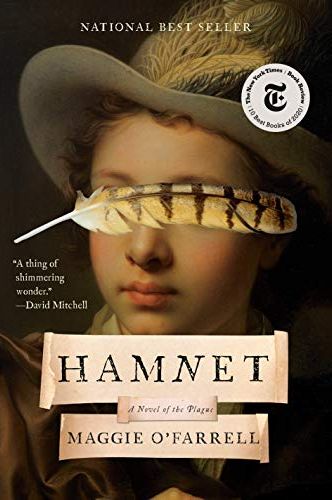
In precise, lavish detail, O’Farrell recreates the story of Shakespeare’s only son (also known as Hamlet), who succumbed to bubonic plague in 1596 at the age of eleven. She shifts between decades flawlessly, braiding the foreground narrative with the personal history of the enigmatic Agnes Hathaway, the Bard’s wife and mother of his three children. The abrupt subtraction of one. In O’Farrell’s telling the boy slips away fast. His father is summoned from the London stage and dashes back to the homestead in Stratford-upon-Avon but is too late. Agnes leans into her final maternal duty: she stitches Hamnet’s shroud, washes and dresses his body for burial.
“She begins at the face, at the top of him. He has a wide forehead . . . She dips the cloth, she washes, she dips again . . . The third finger of his right hand is calloused from gripping a quill. There are small pits in the skin of his stomach from when he had a spotted pox as a small child . . . Agnes looks at her son. The birdcage ribs, the interlaced fingers, the round bones of his knees, the still face, the corn-coloured hair, which has dried now, standing up from his brow, as it always does. His physical presence has always been so strong, so definite.”
I lacked Agnes’ resolve. After Owen passed away that bright cold January morning–measured in minutes, the stutter of alarms, ICU doctors yelling across a carousel of CPR–I came to his bedside. The tumult had ebbed away; there was a hush in the room. The physicians disconnected his ventilator and dimmed the monitors. His breathing tube stubbed out a few inches like a lopped umbilical cord, a smear of blood and gauze around the stoma. I touched his curls. He seemed himself, just asleep. Pink-cheeked, slack-jawed, lips a rosebud. Later his complexion would ashen, his tongue loll, slug-like, from his mouth.
Two nurses nudged me aside and asked whether they could clean him up before my wife arrived at the hospital. Fresh linens, a starched gown. I said yes, but that I wanted to wait out in the lobby, where for an hour I huddled over my cell, scrolling through contacts, veering from call to call. I must have spoken, in nervous fragments, to at least a dozen family members and friends, but I can’t say for sure. In Agnes O’Farrell captures that sense of light-headed disbelief, an instinct to connect what just happened with a larger story: there’s a global pandemic on and my son just died.
After Hamnet’s funeral, a torturous affair–Agnes is “hollowed out, her edges blurred and insubstantial”—her husband once again heeds the siren call of the theater. He can only mourn by going on with the show; he’s already mulling a new piece, a ghost haunting a disaffected Danish prince. The Bard’s daughters act out: Susanna tantrums while Judith, Hamnet’s twin, weeps in silence. Agnes hobbles around in a daze, immersed in country life, tending gardens, keeping bees in a skep. Only in the novel’s last pages when, years later, Agnes journeys to the Globe Theater to watch a performance of Hamlet , can she reconcile her tragedy with an art that transcends and sustains. The play’s the thing, with many allusions to her son. “The knowledge settles on her like a fine covering of rain,” O’Farrell writes. “Her husband has pulled off a manner of alchemy.”
We seek that alchemy from our masters, Shakespeare to O’Farrell and beyond. We seek to be seen in our most private, stripped-down moments. Recently I was having drinks with an acquaintance, a writer, in a garden tucked behind a trattoria in Greenwich Village, when he asked how many children I had, boys, girls? I fumbled the tense— I have . . .uh . . . had three boys, but now only two —before segueing into a précis of my loss. He sat across a rickety table, eyes glistening with tears, but the moment wasn’t heavy, far from it—I’d learned a thing or two about subtraction from O’Farrell. Just now I’m holding the novel in my hand, flipping it open, and finding my reflection there.

A former book editor and the author of a memoir, This Boy's Faith, Hamilton Cain is Contributing Books Editor at Oprah Daily. As a freelance journalist, he has written for O, The Oprah Magazine, Men’s Health, The Good Men Project, and The List (Edinburgh, U.K.) and was a finalist for a National Magazine Award. He is currently a member of the National Book Critics Circle and lives with his family in Brooklyn.

How to Feel Powerful in Every Setting

50 Unique Gifts for Book Lovers

Judy Blume on Why She Quit Writing

An Unexpected Remedy for Anxious Thoughts

Cheslie Kryst’s Mother Is Honoring Her Legacy

8 Classic Books to Get Lost In

What Bird-Watching Taught Me About Motherhood

5 Hopeful Books About Our Planet

10 Best Books to Give a Recent Graduate

Celebrate Father’s Day with These 18 Books

Best New Books of Spring
- ADMIN AREA MY BOOKSHELF MY DASHBOARD MY PROFILE SIGN OUT SIGN IN
Awards & Accolades
Our Verdict
Kirkus Reviews' Best Books Of 2020
New York Times Bestseller
IndieBound Bestseller
National Book Critics Circle Winner

by Maggie O'Farrell ‧ RELEASE DATE: July 21, 2020
A gripping drama of the conflict between love and destiny.
Imagining the life of the family Shakespeare left behind in Stratford makes an intriguing change of pace for a veteran storyteller.
While O’Farrell eschews the sort of buried-secrets plots that drive the propulsive narratives of such previous novels as Instructions for a Heatwave (2013), her gifts for full-bodied characterization and sensitive rendering of intricate family bonds are on full display. She opens with 11-year-old Hamnet anxiously hovering over his twin sister, Judith, who has a mysterious fever and ominous swellings. When Hamnet asks his grandfather where his mother is, the old man strikes him, and as the novel moves through the characters’ memories, we see the role John Shakespeare’s brutality played in son Will’s departure for London. The central figure in this drama is Shakespeare’s wife, Agnes, better known to history as Anne, recipient of the infamous second-best-bed bequest in his will. O’Farrell chooses an alternate name—spelling was not uniform in Elizabethan times—and depicts Agnes as a woman whose profound engagement with the natural world drew young Will to her from their first meeting. The daughter of a reputed sorceress, Agnes has a mysterious gift: She can read people’s natures and foresee their futures with a single touch. She sees the abilities within Will that are being smothered as a reluctant Latin tutor and inept participant in his father’s glove trade, and it is Agnes who deftly maneuvers John into sending him away. She believes she will join Will soon, but Judith’s frailty forestalls this. O’Farrell draws us into Agnes’ mixed emotions as the years go by and she sees Will on his increasingly infrequent visits “inhabiting it—that life he was meant to live, that work he was intended to do.” Hamnet’s death—bitterly ironic, as he was always the stronger twin—drives the couple farther apart, and news of a new play called Hamlet sends Agnes to London in a rage. O’Farrell’s complex, moving finale shows her watching the performance and honoring her husband’s ability to turn their grief into art.
Pub Date: July 21, 2020
ISBN: 978-0-525-65760-6
Page Count: 320
Publisher: Knopf
Review Posted Online: June 15, 2020
Kirkus Reviews Issue: July 1, 2020
LITERARY FICTION | HISTORICAL FICTION | FAMILY LIFE & FRIENDSHIP
Share your opinion of this book
More by Maggie O'Farrell

BOOK REVIEW
by Maggie O'Farrell
More About This Book

PERSPECTIVES

by Kristin Hannah ‧ RELEASE DATE: Feb. 6, 2024
A dramatic, vividly detailed reconstruction of a little-known aspect of the Vietnam War.
A young woman’s experience as a nurse in Vietnam casts a deep shadow over her life.
When we learn that the farewell party in the opening scene is for Frances “Frankie” McGrath’s older brother—“a golden boy, a wild child who could make the hardest heart soften”—who is leaving to serve in Vietnam in 1966, we feel pretty certain that poor Finley McGrath is marked for death. Still, it’s a surprise when the fateful doorbell rings less than 20 pages later. His death inspires his sister to enlist as an Army nurse, and this turn of events is just the beginning of a roller coaster of a plot that’s impressive and engrossing if at times a bit formulaic. Hannah renders the experiences of the young women who served in Vietnam in all-encompassing detail. The first half of the book, set in gore-drenched hospital wards, mildewed dorm rooms, and boozy officers’ clubs, is an exciting read, tracking the transformation of virginal, uptight Frankie into a crack surgical nurse and woman of the world. Her tensely platonic romance with a married surgeon ends when his broken, unbreathing body is airlifted out by helicopter; she throws her pent-up passion into a wild affair with a soldier who happens to be her dead brother’s best friend. In the second part of the book, after the war, Frankie seems to experience every possible bad break. A drawback of the story is that none of the secondary characters in her life are fully three-dimensional: Her dismissive, chauvinistic father and tight-lipped, pill-popping mother, her fellow nurses, and her various love interests are more plot devices than people. You’ll wish you could have gone to Vegas and placed a bet on the ending—while it’s against all the odds, you’ll see it coming from a mile away.
Pub Date: Feb. 6, 2024
ISBN: 9781250178633
Page Count: 480
Publisher: St. Martin's
Review Posted Online: Nov. 4, 2023
Kirkus Reviews Issue: Dec. 1, 2023
FAMILY LIFE & FRIENDSHIP | GENERAL FICTION | HISTORICAL FICTION
More by Kristin Hannah
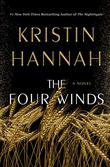
by Kristin Hannah

BOOK TO SCREEN

by Percival Everett ‧ RELEASE DATE: March 19, 2024
One of the noblest characters in American literature gets a novel worthy of him.
Mark Twain's Adventures of Huckleberry Finn as told from the perspective of a more resourceful and contemplative Jim than the one you remember.
This isn’t the first novel to reimagine Twain’s 1885 masterpiece, but the audacious and prolific Everett dives into the very heart of Twain’s epochal odyssey, shifting the central viewpoint from that of the unschooled, often credulous, but basically good-hearted Huck to the more enigmatic and heroic Jim, the Black slave with whom the boy escapes via raft on the Mississippi River. As in the original, the threat of Jim’s being sold “down the river” and separated from his wife and daughter compels him to run away while figuring out what to do next. He's soon joined by Huck, who has faked his own death to get away from an abusive father, ramping up Jim’s panic. “Huck was supposedly murdered and I’d just run away,” Jim thinks. “Who did I think they would suspect of the heinous crime?” That Jim can, as he puts it, “[do] the math” on his predicament suggests how different Everett’s version is from Twain’s. First and foremost, there's the matter of the Black dialect Twain used to depict the speech of Jim and other Black characters—which, for many contemporary readers, hinders their enjoyment of his novel. In Everett’s telling, the dialect is a put-on, a manner of concealment, and a tactic for survival. “White folks expect us to sound a certain way and it can only help if we don’t disappoint them,” Jim explains. He also discloses that, in violation of custom and law, he learned to read the books in Judge Thatcher’s library, including Voltaire and John Locke, both of whom, in dreams and delirium, Jim finds himself debating about human rights and his own humanity. With and without Huck, Jim undergoes dangerous tribulations and hairbreadth escapes in an antebellum wilderness that’s much grimmer and bloodier than Twain’s. There’s also a revelation toward the end that, however stunning to devoted readers of the original, makes perfect sense.
Pub Date: March 19, 2024
ISBN: 9780385550369
Publisher: Doubleday
Review Posted Online: Dec. 16, 2023
Kirkus Reviews Issue: Jan. 15, 2024
LITERARY FICTION | HISTORICAL FICTION | GENERAL FICTION
More by Percival Everett

by Percival Everett

- Discover Books Fiction Thriller & Suspense Mystery & Detective Romance Science Fiction & Fantasy Nonfiction Biography & Memoir Teens & Young Adult Children's
- News & Features Bestsellers Book Lists Profiles Perspectives Awards Seen & Heard Book to Screen Kirkus TV videos In the News
- Kirkus Prize Winners & Finalists About the Kirkus Prize Kirkus Prize Judges
- Magazine Current Issue All Issues Manage My Subscription Subscribe
- Writers’ Center Hire a Professional Book Editor Get Your Book Reviewed Advertise Your Book Launch a Pro Connect Author Page Learn About The Book Industry
- More Kirkus Diversity Collections Kirkus Pro Connect My Account/Login
- About Kirkus History Our Team Contest FAQ Press Center Info For Publishers
- Privacy Policy
- Terms & Conditions
- Reprints, Permission & Excerpting Policy
© Copyright 2024 Kirkus Media LLC. All Rights Reserved.
Popular in this Genre
Hey there, book lover.
We’re glad you found a book that interests you!
Please select an existing bookshelf
Create a new bookshelf.
We can’t wait for you to join Kirkus!
Please sign up to continue.
It’s free and takes less than 10 seconds!
Already have an account? Log in.
Trouble signing in? Retrieve credentials.
Almost there!
- Industry Professional
Welcome Back!
Sign in using your Kirkus account
Contact us: 1-800-316-9361 or email [email protected].
Don’t fret. We’ll find you.
Magazine Subscribers ( How to Find Your Reader Number )
If You’ve Purchased Author Services
Don’t have an account yet? Sign Up.
Breaking News
Review: Shakespeare’s son died of plague, inspiring “Hamlet” — and a new novel about grief
- Show more sharing options
- Copy Link URL Copied!
If you buy books linked on our site, The Times may earn a commission from Bookshop.org, whose fees support independent bookstores.
Maggie O’Farrell ’s eighth novel, “ Hamnet ,” is nominally a work of historical fiction. But its core subject is the kind of unchecked, ravaging despair that follows the death of a child. The author, whose memoir “ I Am, I Am, I Am ” covered the near-death experiences of herself and her ailing daughter, understands the parental terror of a child’s suffering.
After Hamnet dies, his twin sister Judith asks, “Will he never come back?” It is then that her mother, Agnes, first sobs, finding “she can bear anything except her child’s pain. She can bear separation, sickness, blows, birth, deprivation, hunger, unfairness, seclusions but not this: her child, looking down at her dead twin. Her child, sobbing for her lost brother. Her child, racked with grief.” There’s the rub, as William Shakespeare wrote in “ Hamlet .” A parent who is not alone in grief must also bear the grief of her family.
About that family, whose surname we never learn: a brief introductory explanation reminds us that Shakespeare and his wife, Anne Hathaway, lost a son named Hamnet to the bubonic plague. Elizabethan naming conventions were loose: Anne/Agnes/Annis could all be names for the same person, as could Hamnet/Hamlet. Not long after losing his son, William wrote “The Tragedy of Hamlet,” a play about the depths of grief and the impossible quest for justice.
Rather than tracking the Bard, O’Farrell has focused on Shakespeare’s wife and three children (Susannah, the eldest, and Hamnet and Judith, 11). The story begins with Hamnet discovering his twin sick and feverish; when he finds the house empty and seeks help, his grandfather John deals him a nasty blow, just as he had beaten the young Will. Of course we don’t know that. So little is known about the real-life Shakespeare and his family that O’Farrell’s creative license is near-infinite.

Albert Camus’ ‘The Plague’ and our own Great Reset
Albert Camus’ “The Plague,” read in quarantine for the first time, warns us to reset our own priorities
March 23, 2020
As Hamnet races to find an adult, we meet the petulant Susannah, his work-worn grandmother Mary, his stolid uncle Bartholomew and many other Stratford characters. His mother, Agnes, is drawn most finely, out in the meadows checking her bee skeps, woven of hemp. Although later we’ll have more scenes of Agnes and various herbs and potions, it’s here that we “see” her for the first time — and we will never forget how she guides her tiny buzzing workers “gently, ever so gently.”
Her own mother long dead, Agnes defied her sour stepmother, Joan, by falling in love with the young man (tiny hoop dangling from his ear, as in famous etchings) who had been hired to tutor her younger brothers in order to work off his family’s debt to the Hathaways. Never has there been a more passionate scene of youthful sex in an apple storage room.
O’Farrell’s novel isn’t only about grief — or not any more than “Hamlet” is. The novelist calls our attention to the world around her characters, the sensual, sensory world available to us all (not just Elizabethans) but so often glossed over as we go about mundane tasks. There are lovely metaphors and similes — tears “like heavy pearls,” death as a snow-filled landscape — but also passages rich in detail: “Apples ... He brings one up to his face and inhales the scent, sharp, specific, acidic. It brings a slew of distant images to mind: fallen leaves, sodden grass, woodsmoke, his mother’s kitchen.”
Untethered by dates or events, the story loses historicity and gains immediacy, so that even as we know Hamnet will die, we suffer his passing as a shock: “Her son’s body is in a place of torture, of hell. It writhes, it twists, it buckles and strains.” He dies fast and in agony while his twin heals, catching Agnes emotionally unaware. Although she delays the preparation of her son’s small form for as long as possible, in defiance of authorities, her husband does not return from London until Hamnet is shrouded.
Entertainment & Arts
The Wooster Group’s ‘Hamlet’ with Richard Burton: Today’s quarantine must-watch
The experimental theater company revisits Shakespeare using a 1964 filmed performance of Richard Burton. Here’s how to stream it for free.
May 4, 2020
Naturally — as naturally as the bees leave the skep when smoked out — death threatens to break the bond between father and mother, husband and wife. Agnes looks at her husband as they leave the graveyard, “and it is as if she has never seen him before, so odd and distorted and old do his features seem.” He cannot cry, instead pacing their second floor “like someone trying to find their way back to a place for which they have lost the map.”
O’Farrell moves through the family’s pain like a master of signs and signals. Agnes and her daughter Judith make candles, discussing the word “for someone who was a twin but is no longer a twin,” and “Judith watches the liquid slide off the ends of the wicks, into the bowl below. ‘Maybe there isn’t one,’ she suggests. ‘Maybe not,’ says her mother.” The melting, shape-shifting tallow echoes the family’s slow move from a season of grief into a season of change.
But change does not always mean healing. In London, the father busies himself with his writing and company of actors, for “the magnitude, the depth of his wife’s grief for their son exerts a fatal pull. . . . he must hold himself separate in order to survive.” So much comes between them, and perhaps it is no spoiler to say that they are brought back together — for a moment? For years? — by a performance of “Hamlet” that Agnes witnesses, by an actor directed by her husband to behave just as her Hamnet did. “It is too much: she isn’t sure how to bear it, how to explain this to herself.” As she watches, Agnes realizes that her husband “has taken his son’s death and made it his own.”
In “Hamnet,” art imitates life not to co-opt reality, but to help us bear it.
Hamnet Maggie O’Farrell Knopf: 320 pages, $27
More to Read

Review: Ralph Fiennes, an older Macbeth, builds sympathy for a killer with soulful weariness
May 1, 2024

He wasn’t a crier, but then his wife died — and the tears wouldn’t stop. How one father found his way forward
April 17, 2024

Review: ‘Fat Ham’ at the Geffen Playhouse slathers barbecue sauce on ‘Hamlet’ for delicious comedy
April 8, 2024
Sign up for our Book Club newsletter
Get the latest news, events and more from the Los Angeles Times Book Club, and help us get L.A. reading and talking.
You may occasionally receive promotional content from the Los Angeles Times.
More From the Los Angeles Times

Tiffany Haddish just can’t quit. Even when she knows she should
May 2, 2024

Kathleen Hanna is a troubadour unafraid to speak out

In ‘A Man in Full,’ Jeff Daniels plays a real estate mogul whose life crumbles. Sound familiar?

Paul Auster, postmodern author behind ‘The New York Trilogy’ and ‘Smoke,’ dies at 77

Advertise Contact Privacy
Browse All Reviews
New Releases
List Reviews by Rating
List Reviews by Author
List Reviews by Title

By Maggie O'Farrell
Book review, full book summary and synopsis for Hamnet by Maggie O'Farrell, a story about Shakespeare's marriage and the death of his son.
Hamnet opens with some historical notes. A couple in Stratford had three children, twins Hamnet and Judith, and daughter Susanna. Hamnet, died in 1596, aged eleven. Roughly four years later, his father writes the play Hamlet (a name that is interchangeable at the time with name Hamnet).
As the story unfolds, the book tells a fictionalized story of William Shakespeare and his wife Agnes and the death of their son Hamnet.
(The Full Plot Summary is also available, below)
Full Plot Summary
The three-sentence summary: Hamnet is essentially a family-type drama telling the background between Will Shakespeare and his wife Agnes. It follows their relationship as they deal with their grief over the death of their son Hamnet, the implications of Will's career and Will's infidelity. In the end, Will writes the play Hamlet as a farewell to his son -- it's a play where the father dies instead of the son and the ghost's final line is "Remember me."
(The book opens with a few historical notes . A couple in Stratford had three children, twins Hamnet and Judith, and daughter Susanna. Hamnet, died in 1596, aged eleven. Roughly four years later, his father writes the play Hamlet , interchangeable at the time with name Hamnet.)
The chapters jump back and forth between two timelines. In 1596, Hamnet is a young boy whose twin sister Judith has suddenly fallen ill. Hamnet searches for an adult, but the only person home is his drunk and abusive grandfather John Shakespeare. John is a disgraced glove maker, due to his illicit wool trading, among other things. Hamnet's father (William Shakespeare, though he is never named in the book) is in London, as usual. Hamnet's mother, Agnes, is away. He falls asleep next to Judith, crying.
In an earlier timeline, John Shakespeare owes a debt to a (deceased) sheep farmer. John and the farmer's (second) wife Joan have an arrangement for his son William to work off the debt by tutoring Joan's sons. It results in the tutor (Will Shakespeare) meeting Agnes. Agnes and her brother Bartholomew are the farmer's children with his first wife. Agnes has special abilities, where she is able to divine information about people, and she is also good with plants. Agnes and William fall in love.
In 1596, Agnes finally comes home and tries to treat Judith, confirming that she has "the pestilence" (the plague). The doctor shows up and warns them that no one is to leave the house until it has passed. When nothing works, Eliza (William's sister) writes to her brother in London to tell him to come home to say goodbye.
In an earlier timeline, Agnes becomes pregnant. John senses a business opportunity and strikes a bargain with Joan and Bartholomew regarding the debt, wool and Agnes. Soon, Agnes and the tutor are married. The baby, Susanna, is born. Agnes notices that her husband is unhappy as an errand-boy for his father. Agnes comes up with a plan to get John to send William to London. The plan works. Though Agnes is pregnant again, but William leaves for London, with plans to reunite once he is settled there.
An interlude traces the path of the disease. It involves a chance meeting of a glassmaker in Venice and a cabin boy on a ship. The cabin boy brings a disease-ridden flea onto the ship after interacting with a monkey in Alexandria. The pestilence ravages the ship. After the glassmaker loads his cargo in Venice, fleas end up in those boxes, which is unloaded in London. One box makes its way to a dressmaker. Her neighbor's daughter, Judith, is curious about it. The dressmaker lets Judith unpackage the disease-ridden box.
In 1596, Hamnet sees his dying sister and wants to trick death into taking him instead. He crawls into bed next to her. Agnes is soon surprised to discover that Judith is looking better, but Hamnet is barely breathing. She tries every remedy, but he dies.
In the earlier timeline, William sells some gloves to actors at a theater. Soon, he is acting (and later writing plays) and no longer dealing in gloves. In Stratford, Agnes is surprised to have twins, though she is worried because she has always known she would have only two children. Judith is the second one out, and she is weak and smaller than Hamnet. Agnes delays going to London until Judith is stronger, but Judith continues to be weak and sickly. The years pass, but the move to London never happens.
In 1596, William comes home to find Hamnet, not Judith, dead. Hamnet is buried. William is heartbroken. The house is full of reminders of Hamnet, and he is worried about the life he has built in London. William soon goes back to London and does not come home for a long time. Judith wonders if her resemblance to Hamnet is what keeps him away. Agnes grieves, too.
A year after Hamnet's death, William finally comes home. Agnes senses that he has been with other women. William apologizes for everything and decides to buy his family a house here in Stratford since it is clear that they will not be coming to London. He buys the largest house in the town, though he still only visits two or three times a year. As the girls grow up, Judith develops a love of plants like her mother. Susanna helps out with her father's affairs in terms of purchasing land, rental income, and other business affairs.
One day, Agnes learns that William has written a play (Hamlet) named after their son. Upset, Agnes goes (with Bartholomew) to London to find William. She finds him at the playhouse before a performance of Hamlet. As she watches the play, she realizes that her husband has written a play where the father is the one that dies instead of the child. In his play, "Hamlet"/Hamnet gets to live. The book ends with the last line that the ghost delivers, "Remember me".
For more detail, see the full Chapter-by-Chapter Summary .
If this summary was useful to you, please consider supporting this site by leaving a tip ( $2 , $3 , or $5 ) or joining the Patreon !
Book Review
Hamnet by Maggie O’Farrell (or, Hamnet and Judith in some markets) is one of books in recent memory that I’ve been genuinely really excited to read.
After reading Bill Bryson’s wonderful (non-fiction) biography of Shakespeare , I’ve been interested in reading more historical fiction about the famous Bard, but haven’t found much to catch my eye. I tried a couple that I disliked enough that I gave on the pursuit for a while, but Hamnet has gotten great reviews and it sounded like a unique take on Shakespeare.
Hamnet is largely told with a focus on Agnes, the wife of William Shakespeare. (Anne Hathaway is the name that’s commonly used, but Agnes and Anne were commonly interchangeable at that time.) The death of Hamnet, their only male child, due to the plague features prominently in the story as well.
O’Farrell never actually refers to William Shakespeare by name, which helps to detach the story from all the mythology that comes with Shakespeare and his reputation. It also helps to reinforce that, although he is still a main character here, he’s not the main character.
O’Farrell’s Hamnet is a work of historical fiction, with a lot of emphasis on the word fiction . The reality is that what’s really known about Shakespeare is spotty at best (if you want to know more, I’ll reference Bryson’s Shakespeare biography here again), but it still makes for a delightful story to wonder about his life. (I also suspect that this story wouldn’t stand up to careful scrutiny about Shakespeare and all the details of his life, see the Historical Accuracy section below, but I’m not enough of a Shakespearean scholar to say for sure.)
Instead, facts serve as the rough contours of this book that gets filled in colorfully and vividly by this moving and beautifully written story. It’s not a complex or even terribly clever rendition of Agnes and William’s story, but O’Farrell tells it in a way that’s powerful and alive.
Quick (Minor) Criticism
The character of William Shakespeare in this book is humanized and made smaller. I understand why O’Farrell might want to do that, to avoid writing yet another tribute to the greatness of the towering figure of the William Shakespeare. However, I have to admit that this aspect of the book wasn’t entirely satisfying to me. Unlike his portrayal in the book, ultimately, he wasn’t just a guy who became financially comfortable writing plays. Instead, he wrote masterpieces and a lot of them.
Apart from a very brief section where he plays a quick word game with his sister Eliza, there’s nothing in the book indicating that this is or was a brilliant person. Instead, he’s depicted as a disappointment to his parents, an absent father, a weakling and kind of an unmotivated loser in general, all of which made it hard for me to view this as a story that was about Shakespeare at all. I understand this wasn’t intended to be an origin story about William Shakespeare, but I also can’t imagine that this useless lump of a man described here would become the mythological creature that he is.
As a final note, even with that criticism, Hamnet not even being longlisted for the Booker Prize still says a lot more about a deficiencies of the Booker Prize’s judges panel (in my opinion) than it does about Maggie O’Farrell’s newest novel, which is well worth a read.
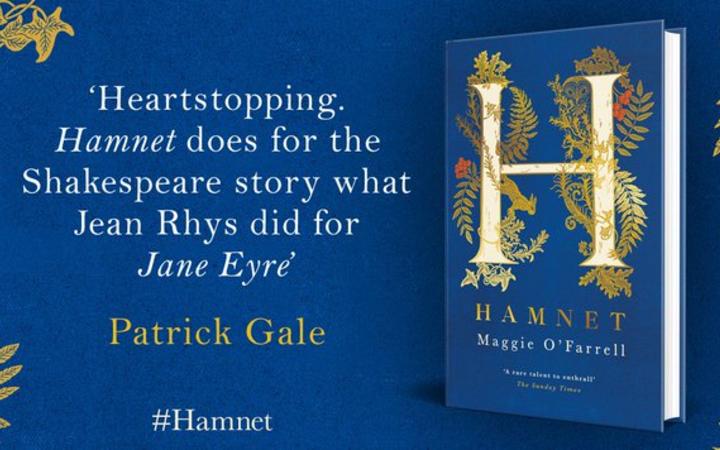

Historical Accuracy
As mentioned previously, there’s definitely a lot of fiction mixed up in here.
For example, a colorful interlude in the book involves a petrified Hamnet and a doctor wearing the distinctively creepy beaked plague mask that you’ve probably seen before. The problem is, in the book this happens in 1596, and the design is commonly attributed to Charles de Lorme , chief physician to Louis XIII, who was born in 1584. It seems unlikely he designed it when he was 12. Furthermore, historians have noted that there’s no evidence the Plague Doctor costume was ever used in London . (It was primarily used in 17th/18th century Italy and France.)
I’m not a historian — not even a history buff, really — so if I can catch this fairly obvious mistake, I’m certain there are others in here as well.
Did any of this spoil my enjoyment of the book? Not really, but again, history buffs and Shakespearean scholars may feel differently.
Read it or Skip it?
Hamnet is a moving and uncomplicated tale about a marriage, a family and the loss of a child. It focuses on the character of Agnes and offers unique rendition of Shakespeare’s life.
I enjoyed the story quite a bit, the writing is lovely, and there’s a lot to like about Maggie O’Farrell’s vivid and engaging version of Agnes and William’s story.
I found the portrayal of William Shakespeare here a bit unconvincing and I think there are likely some historical inaccuracies here, but it still works splendidly as a work of historical fiction due to O’Farrell’s storytelling abilities. It’s an intimate and emotional book that I think historical fiction lovers can appreciate.
See Hamnet on Amazon.
Book Excerpt
Read the first pages of Hamnet
Movie / TV Show Adaptation
See Everything We Know About the 'Hamnet' Adaptation
Share this post

The Seven Year Slip
Darling Girls
Yours Truly
The Coworker
Just for the Summer
Best Literary Fiction of 2024 (New & Anticipated)
The Housemaid Series Recap
2024’s Best Book Club Books (New & Anticipated)
Bookshelf: Development Diary
Best Rom-Com, Beach Reads & Contemporary Romance Books

Share your thoughts Cancel reply
Thanks for your thoughts. I will put this one on my TBR list.
Hi rosi! And thanks for reading, hope all is well with you!
Very emotional moments in the book. The love of a brother for his twin sister is amazing. The only other such example I know is when the firs Meghal emperor Babur was sitting near his son Hamayun’s death bed.He prayed to God to take his life and save his son and that did happen.
Advertisement
More from the Review
Subscribe to our Newsletter
Best of The New York Review, plus books, events, and other items of interest
May 23, 2024
Current Issue
A Wisewoman in Stratford
January 14, 2021 issue
Submit a letter:
Email us [email protected]
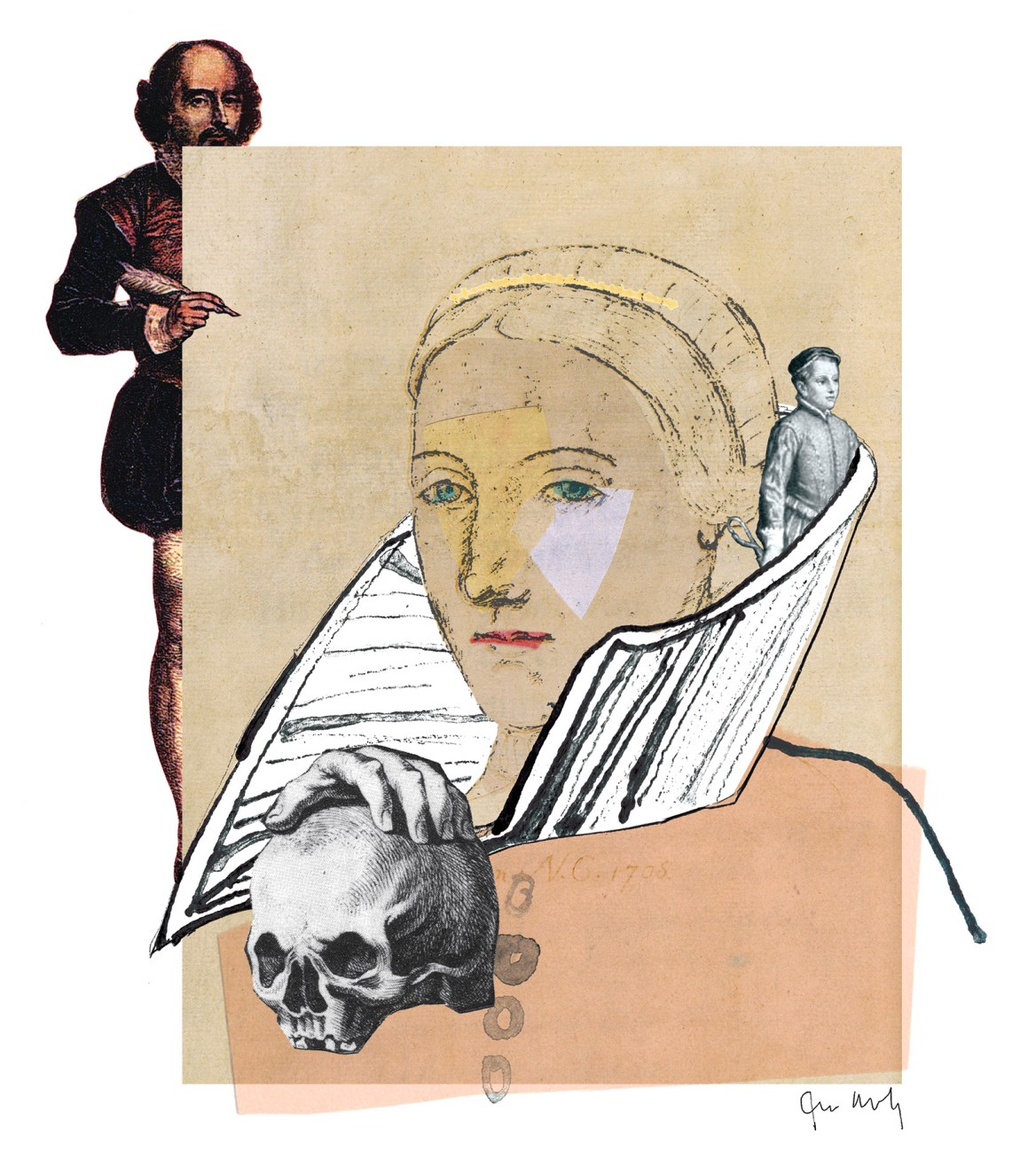
Illustration by Joanna Neborsky
Maggie O’Farrell’s moving historical novel Hamnet is a story of deep loss—the death of a child, struck down by an incomprehensibly virulent epidemic—and its impact upon a marriage that was already buckling under almost intolerable strain. The story’s surprise turn is that, though the grief-stricken wife succumbs for years to crippling depression and though the husband absconds and disappears into his work, the marriage miraculously survives, recovers, and becomes stronger. The wife and husband in question are Anne Hathaway (or Agnes, as she was named in her father’s will and as O’Farrell calls her) and William Shakespeare.
The novel begins in the provincial market town Stratford-upon-Avon, where the eleven-year-old Hamnet, the Shakespeares’ only son, is alarmed by the sudden eruption of strange symptoms on the body of his twin sister, Judith: “He stares at them. A pair of quail’s eggs, under Judith’s skin. Pale, ovoid, nestled there, as if waiting to hatch. One at her neck, one at her shoulder.” The swollen lymph nodes, or buboes—the dread signs of bubonic plague—seem to have come from nowhere, but in a tour de force of contact-tracing O’Farrell reconstructs the chain of random events and haphazard encounters that could have led the fatal bacterium Yersinia pestis to the Shakespeare house on Henley Street:
The flea that came from the Alexandrian monkey—which has, for the last week or so, been living on a rat, and before that the cook, who died near Aleppo—leaps from the boy [in Murano] to the sleeve of the master glassmaker, whereupon it makes its way up to his left ear, and it bites him there, behind the lobe.
And so it goes, on and on along trade routes by land and by sea, until it reaches Warwickshire in 1596.
To readers living in the shadow of a virus that made its way from a wet market in Hubei province to the nursing home around the corner, the story has a ghastly timeliness, though it is some consolation to note that the bubonic plague that struck Europe repeatedly from the fourteenth century onward was far more lethal than what we have been experiencing, and that, unlike Covid-19, it attacked the young and the old with equal ferocity.
O’Farrell brilliantly conveys the horror and devastation the plague brought to individual households—such as Shakespeare’s, as she imagines it—and to entire communities. There is no evidence of what actually killed Shakespeare’s son in 1596, but plague is a reasonable hypothesis. An outbreak in Stratford in 1564, the year of Shakespeare’s birth, took the lives of around a fifth of the population, and the disease recurred throughout the century with nightmarish frequency.
The surviving records of Shakespeare’s life are scanty; those of his wife still scantier. At the age of eighteen he married a woman eight years older than he, and by the time he reached twenty-one, he had fathered three children. This much is clear. And then he evidently abandoned them, leaving them in Stratford, where he was born, and heading off to the capital to write or to act or to do whatever it was that he imagined he was going to do. True, as the years passed, he returned from London from time to time, presumably to visit his wife; his eldest daughter, Susanna; the twins Judith and Hamnet; and his aging parents. And, as his wealth increased, he sent money back to Stratford, resettled his family in a very large brick-and-timber house, and made a succession of local real estate and commodity investments.
To that extent he remained connected. But it is telling that there were no more children born to Agnes and Will, and there is no evidence that the busy playwright shared his rich inner world with his wife or that he involved himself in the daily lives of his offspring.
Archival records suggest that actors who came from the provinces more typically brought their families to London and settled them there. And if the sonnets have any autobiographical truth to them, his most intense emotional and sexual interests lay outside the bounds of his marriage. Between the family in the house on Henley Street in Stratford and the poet in his rented rooms on Silver Street in London, there seems to have been an almost unbridgeable distance.
Biographers presume that Shakespeare must have rushed home in 1596 when his eleven-year-old son Hamnet fell gravely ill from unknown causes, but even that is by no means certain. The boy died in August and Stratford was a two-day ride from London, so it is possible that when word reached the playwright it was already too late. Had there been any warning signs? Did he get the news by letter? Or did someone speak some such words as are heard in a brief exchange in The Winter’s Tale : “Your son…is gone.” “How, ‘gone’?” “Is dead.”
If these words from a late play are somehow linked to what Shakespeare actually experienced in 1596, they are displaced from autobiography and absorbed into someone else’s story; this is how the terrible news reaches a character named Leontes. There was no general inhibition in this period from writing directly from personal experience; quite the contrary. When an outbreak of bubonic plague took his seven-year-old son Benjamin, Shakespeare’s friend and rival Ben Jonson gave voice in an exquisite twelve-line poem to his bitterly painful leave-taking:
Farewell, thou child of my right hand, and joy; My sin was too much hope of thee, loved boy. Seven years thou wert lent to me, and I thee pay, Exacted by thy fate, on the just day. O, could I lose all father now! For why Will man lament the state he should envy? To have so soon ’scaped world’s and flesh’s rage, And if no other misery, yet age? Rest in soft peace, and, asked, say, “Here doth lie Ben Jonson his best piece of poetry.” For whose sake henceforth all his vows be such, As what he loves may never like too much.
It is striking that Shakespeare, as far as we know, left nothing comparable to so direct an expression of parental grief. Though this is the same author who wrote startlingly intimate poems to the young man and the dark lady and, in the words of a contemporary, circulated these “sugared sonnets among his private friends,” Shakespeare seems to have drawn an impenetrable curtain around his feelings, whatever they were, for his family.
In 1616, as he lay dying at the age of fifty-two, Shakespeare signed, in a shaky hand, a will that made many bequests, sentimental and otherwise. To his younger sister Joan he bequeathed £20 “and all my wearing apparrell,” along with the right to live in part of the house on Henley Street—the house in which she and her brother had grown up—for a nominal rent. To John Heminges, Henry Condell, and Richard Burbage, fellow actors and shareholders in the Globe Theater, he bequeathed twenty-six shillings and eightpence each to buy mourning rings, and he gave the same sum to his lifelong friend Hamnet Sadler “to buy him a ringe.” To Thomas Combe, the twenty-seven-year-old relative of a business associate, he left the sword that likely would have gone to his son Hamnet, had he lived.
These provisions—including the sum of £10 to “the poore of Stratford”—are the record of a thoughtful man who has accumulated a great deal of property to dispose of, from the “broad silver gilt” bowl in his grand house to the “barnes, stables, orchardes, gardens, landes, tenementes” that he owned throughout Stratford-upon-Avon and its surrounding villages. He was explicitly concerned to keep Thomas Quiney, the husband of his daughter Judith, from getting his hands on the money she would inherit. And he was equally explicitly concerned to settle most of his substantial estate on his elder daughter, Susanna, married to Dr. John Hall, and on her male heirs.
What is famously notable is the apparent absence of any significant bequest to his wife of thirty-four years. Various explanations have been offered, most plausibly that by custom and perhaps by law she would, as his widow, have been entitled during her lifetime to enjoy a portion of his estate. Still, a glance at comparable wills drawn up by people in Shakespeare’s milieu calls attention to what seems to be missing. From the will of his friend Henry Condell: “I give devise and bequeath all & singuler my freehold Messuages landes Tenementes and hereditamentes whatsoever…unto Elizabeth my welbeloved wife.” From the great actor Richard Burbage: “He the said Richard, did nominate and appoint his welbeloved wife Winifride Burbage, to be his sole Executrix of all his goodes and Chattelles whatsoever.” Likewise the theatrical entrepreneur Philip Henslowe: “I give and bequeath unto Agnes Henslow my loving wife, all and singuler my Landes, Tenementes, hereditamentes and Leases whatsoever.” William Bird, the lead actor in the Earl of Pembroke’s Men: “All other of my goods and chattells whatsoever…I give and bequeath unto my dearly beloved wiefe Marie Bird.” And the actor Thomas Downton, also of Pembroke’s Men: “I do make & Constitvte Iayne my welbeloved & Constant wife my sole Exectatrixe of all my personall Estate.” The list could go on.
The sense of something missing is heightened rather than relieved by a single line evidently inserted, after the document was already drawn up, into Shakespeare’s will: “I gyve unto my wief my second best bed with the furniture.” That’s it. No “loving,” no “dearly beloved,” no “well-beloved and constant,” let alone any hint of the sentiment that led his friend John Heminges to direct that he be buried as near as possible “to my loueinge wife Rebecca.” When Shakespeare contemplated his final resting place, he wanted only to lie undisturbed: “Blessed be the man that spares these stones, And cursed be he that moves my bones.”
Maggie O’Farrell constructs a very different story from the unhappy marriage suggested, to me at least, by these scattered archival traces. To be sure, in her telling, the absent father does not return to Stratford in time to witness the terminal illness of Hamnet. He arrives in time only for the laying out of the corpse and the bleak funeral. Then, to the intense distress of his wife and muttering something inadequate about his theater company, his season, and his preparation, he soon leaves again for London. But that apparent abandonment is folded into what O’Farrell imagines as a story of deep, enduring love.
Though she is in a distinct minority, O’Farrell is not the first to imagine it so. Already in the nineteenth century some biographers suggested that the best bed would have been reserved for visitors and that the second-best bed must have had sentimental value. Hence, in Hamnet , Susanna takes over some of the household tasks from her grieving mother and, at her father’s bidding, buys new furniture for the house, but Agnes “refuses to give up her bed, saying it was the bed she was married in and she will not have another, so the new, grander bed is put in the room for guests.”
As for the absence from the will of terms of endearment, these are mere conventions, and the most eloquent writer the world has ever known would hardly have needed or welcomed recourse to such trite phrases. The deepest emotional bonds may be precisely those that are literally inexpressible. Within his own family O’Farrell’s Shakespeare—who is never referred to in the novel by name but only as “he” or “her husband” or “the father” and the like—is a man of conspicuously few words. Even his courtship of Agnes, as O’Farrell depicts it, is a string of monosyllables and silences: “‘I…’ he begins, without any idea where that sentence will go, what he wants to say. ‘Do you…’”
As O’Farrell acknowledges, her vision of the Shakespeare marriage is indebted to a 2007 book by Germaine Greer, Shakespeare’s Wife. In Greer’s account Agnes Hathaway Shakespeare was an impressive person who has been dismissed, belittled, and slandered by centuries of misogynistic male historians and critics. “The Shakespeare wallahs”—among whom, I regret to say, I prominently figure for Greer—
have succeeded in creating a Bard in their own likeness, that is to say, incapable of relating to women, and have then vilified the one woman who remained true to him all his life, in order to exonerate him.
Speaking for myself, I never thought that Shakespeare was “incapable of relating to women,” only that he seems to have been incapable of relating to his wife. And I have never been inclined to vilify Agnes or to blame her in any way for her husband’s neglect or aversion.
With considerable energy and resourcefulness, Greer combs the surviving records for signs that Agnes was an accomplished and steadfastly loyal wife. Shakespeare scholars have not, so far as I know, embraced her suggestion that Agnes was responsible for the creation of the First Folio or that she may have written a still-undiscovered will leaving money “in trust to be spent on further publishing of her husband’s work,” but O’Farrell, for one, has been inspired by Greer’s effort to imagine a wife more substantial than the one James Joyce described as a “boldfaced Stratford wench who tumbles in a cornfield a lover younger than herself.” And the result is a satisfying and engaging novel that conjures up the life of a strong, vulnerable, lonely, and fiercely independent woman.
O’Farrell does Greer one better by depicting Agnes as what the Renaissance would have called a “wisewoman,” that is, a healer with special powers. Those powers derive for the most part from a deep understanding of the medicinal properties of plants, but there is something uncanny about what she can do. The first time Agnes and Shakespeare meet—at the country farm where the teenage Shakespeare is tutoring her stepbrothers in Latin—Agnes takes his hand and, gripping the flesh between his thumb and forefinger, mysteriously divines his inner nature. She discovers
something she would never have expected to find in the hand of a clean-booted grammar-school boy from town…. It had layers and strata, like a landscape. There were spaces and vacancies, dense patches, underground caves, rises and descents…. She knew there was more of it than she could grasp, that it was bigger than both of them.
It is easy to forgive O’Farrell the shopworn phrase “bigger than both of them” since it gestures toward what must have seemed, to anyone capable of perceiving it, indescribably strange about Shakespeare’s inner landscape.
The magnitude of that landscape, in O’Farrell’s account, is what drew Shakespeare to Agnes but what also drove him to leave her and their three children and the rest of his family, including his parents, and head off on his own to London. As the novel depicts them, Shakespeare’s mother was narrowly conventional and his father, a glover, was a drunken, irascible brute. To escape from them was a necessity. But the budding playwright wanted his beloved Agnes to join him. It was she, in O’Farrell’s reckoning, who always found a reason to delay: “Until spring comes. Until the heat of summer is over. When the winds of autumn are past. When the snow has melted.” Her motive was to preserve the lives of their precious children, to guard them from the hazards of the disease-ridden city. To this end she was willing to subordinate her deep love for her husband. And it is here, in her predominating maternal solicitude, that the novel finds its real life.
For disease and death haunted not only the crowded cities of Tudor England but also its country towns and leafy rural settlements. Given the general state of Renaissance medical knowledge, a sick person stood a better chance with the plant-based cures of a wisewoman such as O’Farrell’s Agnes than with the hideous cuppings and purges of the best Padua-trained physician. Little Hamnet, frightened by the sudden illness of his twin sister, is right to be desperately seeking his mother. But she is out in the fields, more than a mile away, collecting herbs for her healing practice. By the time she returns home, the symptoms on the little girl’s body of bubonic plague are unmistakable, and with every passing moment they are getting worse.
Narrating severe illness is for O’Farrell a personal specialty. In her 2017 memoir I Am, I Am, I Am: Seventeen Brushes with Death , she describes a childhood illness that left her bedridden for a year and from which she was not expected to recover, and, still more harrowing, she depicts in excruciating, searing detail her infant daughter’s immune-system disorder:
Her skin is bubbling and blistering, each breath a struggling symphony of whistles and wheezes. Her face, under the scarlet hives, under the grotesque swelling, is ghastly white.
I think: she cannot die, not now, not here. I think: how could I have let this happen?
O’Farrell brings this direct personal experience to bear as she imagines all of Agnes’s frantic efforts to save her daughter and her irrational but unbearable feelings of responsibility. Ultimately, as we know, it was not Judith who died but her twin brother. (Judith in historical fact lived to the age of seventy-seven, dying in 1662.) Here the novel has recourse to the occult forces that had earlier accounted for Agnes’s prescient reading of her young suitor’s hand. Hamnet silently and mysteriously wills himself to take his sister’s place in the clutches of death, leaving Judith to recover as if her mother’s herbal remedies had saved her.
The recovery only intensifies Agnes’s tormenting guilt, for she feels that she somehow failed to focus her attention adequately upon the boy, and she plunges into a grief that is not unmixed with anger at her husband for not being there when she most needed him. Her anger intensifies when, having laid his son in the ground, Shakespeare announces his intention to return to London. But even in the midst of her anger, Agnes, as O’Farrell suggests, must have understood what was impelling him to leave. “You are caught by that place, like a hooked fish,” she tells him:
“What place? You mean London?”
“No, the place in your head. I saw it once, a long time ago, a whole country in there, a landscape. You have gone to that place and it is now more real to you than anywhere else. Nothing can keep you from it. Not even the death of your own child.”
After her husband leaves, Agnes succumbs to what we would now call clinical depression. And lest we think that such depression is a novelist’s historical anachronism—that parents in the early modern period must have been hardened to the death of children, since it was so terribly common—we might consider the diary of Richard Napier, a seventeenth-century Buckinghamshire astrological physician. The historian Michael MacDonald, who deciphered Napier’s voluminous notes and analyzed them in a remarkable 1981 book called Mystical Bedlam: Madness, Anxiety, and Healing in Seventeenth-Century England , found that the physician treated numerous parents, and especially mothers, who were “ever leaden with grief” after a child’s death. As William Paulet, the Marquis of Winchester, had written in 1586, “The love of the mother is so strong, though the child be dead and laid in the grave, yet always she hath him quick in her heart.”
Such is the burden, brilliantly depicted, of O’Farrell’s Agnes. Her depression lasts for years, and, though it feels as if it could never get worse, it is intensified when she learns, to her horror, that her husband has written a play that bears her son’s name. (The names Hamnet and Hamlet in this period were interchangeable.) How, she asks herself, could he have been so callous as to exploit for mass entertainment his family’s intimate tragedy?
In the novel’s climactic scene, Agnes travels to London to confront her husband. There, in the midst of the general urban filth and confusion, she has two revelations. Her first comes when she rushes to his rooms. She does not find him there, but, crucially, she finds no sign that anyone besides the playwright has been there. This is the room of a solitary writer—no trace of a lover, male or female. On his desk there is a letter to her that he has begun but left unfinished. The second and still greater revelation comes when she pays her penny, thrusts herself amid the heaving crowd, and enters the wooden O of the Globe. There on the raised stage she sees her husband, his face made up in ghastly white, playing the part of a ghost, the ghost, as the characters around him say and the crowd repeats, of Hamlet:
To hear that name, out of the mouths of people she has never known and will never know, and used for an old dead king: Agnes cannot understand this. Why would her husband have done it?
Thoroughly disgusted, she is readying herself to leave when she is transfixed by the appearance on stage of another character, a boy, or rather a young man, with the precise mannerisms of the dead Hamnet—“walking with her son’s gait, talking in her son’s voice”—and at just the age he would have been, had he lived. For a moment she is utterly baffled, and then the meaning of it all comes over her: “Hamlet, here, on this stage, is two people, the young man, alive, and the father, dead. He is both alive and dead. Her husband has brought him back to life, in the only way he can.”
To perform this extraordinary feat, she suddenly understands, her husband, in taking on the role of the ghost, has taken his child’s death and made it his own: “He has put himself in death’s clutches, resurrecting the boy in his place.” The reader of the novel also knows, as Agnes cannot, that in offering himself in place of the other, Shakespeare has in effect done for his son what his son did for his gravely ill sister. What Agnes can and does know is that through the power of art her husband has redeemed himself and saved whatever he could of his lost son.
Did it actually happen this way? Almost certainly not. Was the moribund marriage saved? I doubt it. But I too am convinced that Shakespeare drew upon his grief and mourning to write the astonishing, transformative play that bears his son’s name. With her touching fiction O’Farrell has not only painted a vivid portrait of the shadowy Agnes Hathaway Shakespeare but also found a way to suggest that Hamnet was William Shakespeare’s best piece of poetry.
January 14, 2021
The Poet and the Reader: Nobel Lecture 2020
The Prophet of Maximum Productivity
The Imperial Gardener
Subscribe to our Newsletters
More by Stephen Greenblatt
An exhibition at the Metropolitan Museum of Art displays the extravagant Tudor taste for jewels, artworks, tapestries, and other finery.
December 22, 2022 issue
April 8, 2021 issue
June 11, 2020 issue
Pestilence & the Bard
April 8, 2021
Stephen Greenblatt is the Cogan University Professor of the Humanities at Harvard. His books include Will in the World: How Shakespeare Became Shakespeare and Tyrant: Shakespeare on Politics . (December 2022)
V. S. Pritchett, 1900–1997
April 24, 1997 issue
‘Animal Farm’: What Orwell Really Meant
July 11, 2013 issue
The Disease of All Diseases
December 1, 1994 issue
February 1, 1963 issue
Short Reviews
June 24, 1976 issue
November 19, 2020 issue
February 11, 2021 issue
November 5, 2020 issue

Subscribe and save 50%!
Get immediate access to the current issue and over 25,000 articles from the archives, plus the NYR App.
Already a subscriber? Sign in
- By Maggie O’Farrell
- Reviewed by Robert Allen Papinchak
- August 22, 2021
A masterful reimagining of the life — and death — of the Bard’s only son.
_1.png)
If Maggie O’Farrell’s Hamnet (shortlisted for the 2020 Women’s Prize in fiction) were simply a captivating love story about a “falconer girl” and a “Latin tutor,” it would be compelling enough to hold a reader’s attention. However, when the tutor turns out to be William Shakespeare and the girl his wife (here known not as Anne, but Agnes), it becomes a brilliant historical novel steeped in the heady atmosphere of the 16th century.
With the little that is known about the playwright’s personal life and the even less that is known about his only son, O’Farrell has taken what she calls “idle speculation” and “scant historical facts” and transformed them into a spectacular narrative. She reconstructs the life and times of the Bard of Avon, his wife, and his children. And she makes the story her own.
Hamnet opens with a boy “coming down a flight of stairs…He takes each step slowly, sliding himself along the wall, his boots meeting each tread with a thud.” As he reaches the bottom, he pauses a moment, “looking back the way he has come. Then, suddenly resolute, he leaps the final three stairs…He stumbles as he lands, falling to his knees on the flagstone floor.”
He is greeted by an unexpected, unusual silence. It is a profound quiet that dominates his short life and provides the emotional center to the entire exceptional novel. With a foregone sense of foreboding, it is not a spoiler to reveal that this 11-year-old boy never becomes a man.
But this is not just a book about Hamnet’s death. It is also a startling revelation about the crippling effects of grief and the arcane sources of creativity. It is about the mystery and magnificence of the family bond. Not just any family — the family Shakespeare.
In the disconcerting stillness, Hamnet is searching for someone, anyone to help him with his “unwell” twin sister, Judith. No one seems to be around. Not his grandparents next door; not his older sister, Susanna; and, most importantly, not his mother. His famous father is “miles and hours and days away, in London, where the boy has never been.” There is only the “indefinable noise of a house at rest, empty.” He is disconsolate, “utterly confounded to be so alone.” He lurches about, wondering, “where is everyone?”
Eventually, after rambling through the village, he stops at the physician’s house, where he discloses that Judith has a fever, along with “buboes [and] lumps. Under the skin. On her neck, under her arms.” He returns home, unwilling to name her illness: “He will not name it, he will not allow the word to form, even inside his head.”
It is, of course, the plague, one that has shuttered all the playhouses in London “by order of the Queen, and no one is allowed to gather in public.” The great misfortune may be the family’s good fortune. It means his father may be able to return home for months.
O’Farrell gives vivid dimension to the story by flashing back to the time William and Agnes met. Eighteen-year-old Will is paying down his father’s debt to a yeoman who owns acreage in Hewlands by teaching Latin grammar to the farmer’s sons. Even there, his creative mind wanders. From a window, he watches trees:
“lined up as they are, fringing the edge of the farm, bring[ing] to his mind the backdrop of a theatre, the kind of painted trickery that is unrolled, quickly, into place to let the audience know they are now in a sylvan setting…on wooded, uncultivated, perhaps unstable ground.”
He also notices what he at first thinks is a young man “wearing a cap, a leather jerkin, gauntlets…[with] some kind of bird on his outstretched fist.” He is instantly drawn to the falconer, but then discovers it is the farmer’s eldest daughter. Thinking of her, of “her braid, her hawk,” lightens his “indentured” visits. She, too, is immediately taken with him.
What he doesn’t know is that she has a reputation for being “strange, touched, peculiar, perhaps mad.” She is known to carry a bag of “curses and cures.” In fact, she has psychic powers, “fascinated by the hands of others.” She finds the “muscle between thumb and forefinger…irresistible.”
When she takes hold of Will’s skin, an “oddly intimate” gesture, she senses greatness. He has a future that is “far-reaching [with] layers and strata, like a landscape…too big, too complex…more than she could grasp…bigger than both of them.” He is enamored of her because he thinks she “see[s] the world as no one else does.” Her paranormal skills match his imagination.
There are several memorable set pieces in the novel. The first, in 1583, is the couple’s initial lovemaking, a breathtaking scene set in an apple-storage area of the farm. Visually and aurally stimulating, it is vigorous enough to make a “tapping, rhythmic, rocking sound,” enough to “rotate and jostle [apples] in their grooves.”
The result is their firstborn, Susanna, who arrives in a captivating labor sequence in a forest where the “branches are so dense you cannot feel the rain.” It is there Agnes foresees that Will and she will have “two children and they will live long lives.” When she later bears twins, she is unsettled by what the earlier premonition must mean.
What no one knows is that, in 1596, there is a pestilence making its way from Alexandria, Egypt, via fleas, a monkey, cats, rats, and a cabin boy to infected rags wrapped around a glass necklace from Murano, Italy. The trail of disease ends in England when young Judith receives the millefiori beads. The heart-stopping description of the journey is one of O’Farrell’s most astounding narrative sequences.
Another remarkable one is the death of Hamnet at the end of the first part of the novel. Judith has been spared, but in an alarming, disconcerting way. A “great soundlessness” descends into the room where Hamnet lies. The hush that opened the book returns. There is only “silence, stillness. Nothing more.”
But O’Farrell is not quite finished with the boy, his mother, his father, or history (living and literary). The boy may be gone, but he is not forgotten. His memory lives on in the play that becomes Hamlet .
As the epigraph to the second part of the novel, O’Farrell quotes the prince’s dying words to Horatio: “I am dead:/Thou livest…draw thy breath in pain,/To tell my story.” She then explores the possibility that Agnes made her way to London and saw her husband appear at the Globe as Hamlet’s father’s ghost.
This closing sequence is the ultimate, gut-wrenching scene. Agnes realizes the emotional toll their child’s death has taken on Shakespeare. It has been four years. She has “looked for [him] everywhere, ceaselessly…and here he is.”
“[Her] Hamnet is dead…yet [this Hamlet] is him, grown into a near-man, as he would be now, had he lived, on the stage, walking with her son’s gait, talking in her son’s voice, speaking words written for him by her son’s father.” Her husband has “pulled off a manner of alchemy.”
Ghosts of all kinds prevail. They populate the stage; they embrace everyone’s thoughts. The Hamlet on the boards is “two people…both alive and dead.” A “final silence” descends at the end of the play, after “the dead have sprung up to take their places in the line of players at the edge of the stage.”
What O’Farrell has done is incredible. She has memorialized a family. The novel is the thing in which she catches the conscience of the reader. This is the kind of dazzling novel to put in everyone’s hands, to tell everyone to read. It is a flawless achievement. Every sentence is silk; every detail vibrant; every character pulsates.
In the overwhelming, heartbreaking conclusion of Hamnet , the author collects all the silences, all the sufferings, all the ghosts into a compelling resolution to tell the Shakespearean story. She breathes life into the boy who fell down the stairs.
[Editor's note: This review originally ran in 2020.]
Robert Allen Papinchak is a former university English professor whose reviews and criticisms appear in newspapers, magazines, literary journals, and online, including Publishers Weekly, the Los Angeles Review of Books, On the Seawall, World Literature Today, and elsewhere.
Support the Independent by purchasing this title via our affliate links: Amazon.com Or through Bookshop.org
Book Review in Fiction More
Luckenbooth
By jenni fagan.

A brooding Edinburgh tenement bears witness to a century's worth of strange doings.
The Fortunate Ones: A Novel
By ellen umansky.

A riveting exploration of love and loss in a quest to find a missing work of art.
- Historical Fiction ,
Advertisement
- Member Login
- Library Patron Login
SUBSCRIBE TO OUR
FREE NEWSLETTERS
Search: Title Author Article Search String:
BookBrowse Reviews Hamnet by Maggie O'Farrell
Summary | Excerpt | Reading Guide | Discuss | Reviews | Beyond the book | Read-Alikes | Genres & Themes | Author Bio
by Maggie O'Farrell
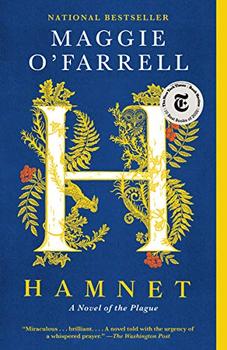
Critics' Opinion:
Readers' Opinion:
- Historical Fiction
- UK (Britain) & Ireland
- 17th Century or Earlier
- Dealing with Loss
- Top 20 Best Books of 2020
Rate this book
About this Book
- Reading Guide
Book Awards
- Media Reviews
- Reader Reviews
Set in Stratford-upon-Avon in the 1590s, Hamnet imagines the impact of the death of their child on William and Agnes Shakespeare.
William Shakespeare's name is never used in Hamnet — a conspicuous absence around which Maggie O'Farrell forms her richly imaginative narrative. Instead, the novel tells the story of those closest to Shakespeare: his parents, John and Mary; his wife Agnes; his daughter Susanna; and his twin children Hamnet and Judith. Shakespeare himself features in the narrative, though he is only ever described in relation to those around him, referred to as the Latin tutor, the husband, the father, the son. The result of this narrative decision is twofold: it pushes Shakespeare's family to the foreground, but it also humanizes Shakespeare himself by reminding the reader that none of his works were created in a vacuum. This is the central conceit around which the novel's climax is formed, as O'Farrell imagines the potential influence of Hamnet's death in 1596 on Hamlet , written between 1599 and 1601. Despite the novel's title, Agnes is its protagonist. O'Farrell draws on the limited historical detail that we have about the real Agnes as her backdrop, and then fleshes her out into a compelling character. Portrayed as a village outcast, there are whispers and rumors throughout the book that she's a witch; this is heightened by a hint of magical realism in which Agnes is able to divine certain details about the future. She knows, for example, that she will have two children standing at her bedside when she dies; she is shocked then when she gives birth to twins, already having one older child (the reader, of course, understands that her vision is accurate, knowing that Hamnet will die young). The first two-thirds of the novel are split into a dual timeline, bouncing back and forth between the week of Hamnet's death (the present), and the blossoming romance between William and Agnes (the past). It's a tender yet fraught courtship, and the pacing here is slow and deliberate. The final third speeds up and takes place after the death of their son. Both parts are equally as successful — the languid pace is sustained by O'Farrell's lyrical prose, and the more frantic pace is made tense and urgent by it.
Every life has its kernel, its hub, its epicenter, from which everything flows out, to which everything returns. This moment is the absent mother's: the boy, the empty house, the deserted yard, the unheard cry. Him standing here, at the back of the house, calling for the people who had fed him, swaddled him, rocked him to sleep, held his hand as he took his first steps, taught him to use a spoon, to blow on broth before he ate it, to take care crossing the street, to let sleeping dogs lie, to swill out a cup before drinking, to stay away from deep water. It will lie at her very core, for the rest of her life.
This novel is gentle and domestic and, in many ways, speaks to grief as a commonality of the human experience. But despite O'Farrell's light touch with historical detail, it's a novel that cannot be removed from its Shakespearean context. The allusions to Shakespeare's works are more hints and whispers than overt references, but any eagle-eyed Shakespeare fan will enjoy the way O'Farrell plays with expectations, ducking around moments that could be turned into fan service by an author with a heavier hand. And what if I fail? Shakespeare asks Agnes at one point, echoing Macbeth's line If we should fail? Agnes's response is not, however, Lady Macbeth's famous retort ( We fail! ) — instead she says You won't fail. I know it . The point is clear — Shakespeare's plays were all works of fiction; Agnes likely never said the words We fail!/ But screw your courage to the sticking-place, and we'll not fail to her husband, thus inspiring Lady Macbeth's famous line. But as reality and fiction often exist in a symbiotic relationship, O'Farrell imagines the subtler influences of Agnes and Hamnet on Shakespeare in a novel that's as intimate and human as it is grandiose.
- "Beyond the Book" articles
- Free books to read and review (US only)
- Find books by time period, setting & theme
- Read-alike suggestions by book and author
- Book club discussions
- and much more!
- Just $45 for 12 months or $15 for 3 months.
- More about membership!
Beyond the Book: Anne Hathaway and Hamnet Shakespeare
Read-alikes.
- Genres & Themes
If you liked Hamnet, try these:
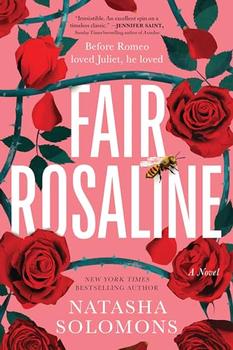
Fair Rosaline
by Natasha Solomons
Published 2024
About this book
More by this author
The most exciting historical retelling of 2023: a subversive, powerful untelling of Romeo and Juliet by New York Times bestselling author Natasha Solomons. Was the greatest ever love story a lie?
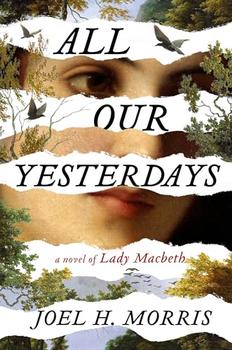
All Our Yesterdays
by Joel H. Morris
A propulsive and piercing debut, set ten years before the events of Shakespeare's historic play, about the ambition, power, and fate that define one of literature's most notorious figures: Lady Macbeth.
Support BookBrowse
Join our inner reading circle, go ad-free and get way more!
Find out more
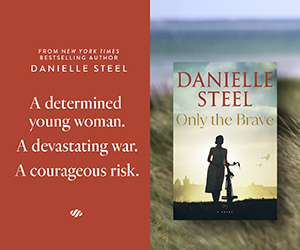
BookBrowse Book Club
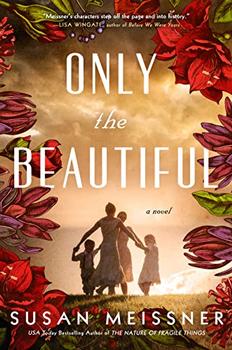
Members Recommend

The Flower Sisters by Michelle Collins Anderson
From the new Fannie Flagg of the Ozarks, a richly-woven story of family, forgiveness, and reinvention.
Who Said...
Never read a book through merely because you have begun it
Click Here to find out who said this, as well as discovering other famous literary quotes!
Solve this clue:
and be entered to win..
Your guide to exceptional books
BookBrowse seeks out and recommends the best in contemporary fiction and nonfiction—books that not only engage and entertain but also deepen our understanding of ourselves and the world around us.
Subscribe to receive some of our best reviews, "beyond the book" articles, book club info and giveaways by email.
- Biggest New Books
- Non-Fiction
- All Categories
- First Readers Club Daily Giveaway
- How It Works

Get the Book Marks Bulletin
Email address:
- Categories Fiction Fantasy Graphic Novels Historical Horror Literary Literature in Translation Mystery, Crime, & Thriller Poetry Romance Speculative Story Collections Non-Fiction Art Biography Criticism Culture Essays Film & TV Graphic Nonfiction Health History Investigative Journalism Memoir Music Nature Politics Religion Science Social Sciences Sports Technology Travel True Crime
May 2, 2024
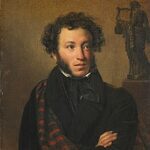
- Who’s stealing all those rare editions of Pushkin from libraries around Europe?
- Steve Edwards explores how an autism diagnosis altered his relationship to his writing
- A conversation with Eileen Myles
Reading Ladies
Hamnet [book review] #literaryfiction.
Hamnet by Maggie O’Farrell is poignant Literary Fiction, the story of a mother’s grief, and the winner of the Women’s Fiction Prize for 2020.
Hamnet by Maggie O’Farrell

Genre/Categories/Setting: Historical Literary Fiction, Family Life, Mothers and Children, Grief, Magical Realism, 1500s England
*This post contains Amazon affiliate links.
TW: Review mentions the death of a child.
My Summary of Hamnet:
Hamnet is set in 1580s Warwickshire, England and is the highly imagined story of William Shakespeare’s family and his wife, Agnes (Anne). This is a poignant and emotional story focused on marriage and family. Shakespeare and Agnes have three children, and we know from history that Hamnet dies. In this story of a mother’s grief, O’Farrell imagines that the 1550s plague is the cause of his death. You might be surprised that William Shakespeare is “off-stage” for the majority of the story and is never mentioned by name (referred to as husband, father, etc.). As a result, Agnes is centered as the main character of the story, and a mother’s grief is the main theme. A beautiful woman, Agnes exhibits some supernatural gifts of healing with herbs, is entirely devoted to family, and frequently experiences glimpses into the future.
My Thoughts About Hamnet:
Writing and Structure: The first thing that will strike you about Hamnet is the exquisite writing. I was convinced within a few chapters that Hamnet is truly Literary Fiction . (the focus of literary fiction is on the craft of writing, social observations, the meaning of life, and heavily character-driven with the action being internal). This passage is from the opening pages and sets the stage for the story and foreshadows the tension, grief, and regret to come:
“Every life has its kernel, its hub, its epicentre, from which everything flows out, to which everything returns. This moment is the absent mother’s: the boy, the empty house, the deserted yard, the unheard cry. Him standing here, at the back of the house, calling for the people who had fed him, swaddled him, rocked him to sleep, held his hand as he took his first steps, taught him to use a spoon, to blow on broth before he ate it, to take care crossing the street, to let sleeping dogs lie, to swill out a cup before drinking, to stay away from deep water. It will lie at her very core, for the rest of her life.”
This passage is especially compelling as I felt the desperation of this boy as he calls for help for his sister who has fallen ill. At the same time, I can strongly image his mother’s regret at not being there.
O’Farrell uses the entire book to detail a brief number of days in which the plague descends on Shakespeare’s home with devastating results. The filler is flashbacks of Agnes and William’s love story, early marriage, and family life. These flashbacks jump in a steam of consciousness way and readers can quickly lose their bearings if not focused. The flashbacks can take the reader to any time and place. It’s a challenging read in the sense of structure .
Character-Driven: Even though the story is heavily character-driven, it contains enough plot to move the story forward. I liked that William was kept in the background (mostly offstage) to better focus on the imagined story of Agnes and their family. O’Farrell draws a beautiful and fascinating portrait of an intriguing and mysterious Agnes from her early romance with William to the realities of being a wife and mother in the 1580s to her profound grief to her rebuilding. Agnes is a strong, likable, and inspiring character.
Setting: O’Farrell’s depiction of life in the 1580s to the 1590s is detailed and atmospheric and I was transported there! It’s not often that we’re taken that far back in historical fiction!
Themes: As mentioned above, grief is the driving theme and its description is breathtaking and heart wrenching. Other themes include brother/sister relationships, mother/daughter connection, a woman’s life in the 1500s, and forgiveness. The story includes magical realism, connecting with the dead, foreseeing the future, and striking a bargain in the dying process. This was not my favorite part (affected my rating) and I would have been happy with less of the paranormal, but this is personal taste. Readers who love the paranormal aspect will find it well done.
Strong Trigger Warnings/Content Consideration: Most of this heartfelt story is focused around the death of a child and resulting grief. Because of this I feel like it’s an emotionally heavy read for anyone .
Recommended!
Recommended: This mother’s story is definitely recommended for fans of Maggie O’Farrell, for readers of engaging historical fiction, for those who appreciate Literary Biographical Fiction and want to read the 2020 Women’s Fiction Prize winner, for readers who desire to know more about the woman behind a famous man, and for book clubs (with TWs). Because this is Agnes’s story, I feel like this could have been called Agnes , but the title probably wouldn’t have been as eye catching as Hamnet .
Hamnet has won the Women’s Fiction Prize for 2020.
Thanks Davida @ The Chocolate Lady’s Book Blog for bringing the book to my attention. You will enjoy her thoughtful review!
My Rating: 4.5 Stars (rounded up to 5)
More Information Here
Meet the Author of Hamnet, Maggie O’Farrell

Have you read a book by Maggie O’Farrell?
Fall 2020 TBR
Summer 2020 TBR (updates)
Happy Reading Book Buddies!
“Ah, how good it is to be among people who are reading.” ~Rainer Maria Rilke
“I love the world of words, where life and literature connect.” ~Denise J Hughes
“Reading good books ruins you for enjoying bad ones.” ~Guernsey Literary and Potato Peel Pie Society
“I read because books are a form of transportation, of teaching, and of connection! Books take us to places we’ve never been, they teach us about our world, and they help us to understand human experience.” ~Madeleine Riley, Top Shelf Text
Let’s Get Social!
Thank you for visiting and reading today! I’d be honored and thrilled if you choose to enjoy and follow along (see subscribe or follow option), promote, and/or share my blog. Every share helps us grow.
Find me at: Twitter Instagram Goodreads Pinterest
***Blog posts may contain affiliate links. This means that I can earn a small percentage of your purchase price at no extra cost to you.
Unless explicitly stated that they are free, all books that I review have been purchased by me or borrowed from the library.
Book Cover and author photos are credited to Amazon or an author’s (or publisher’s) website.
© ReadingLadies.com
Shares are appreciated:
42 comments.
An excellent review. One of my favourite books this year. I love Maggie O’Farrell’s writing.
Thanks! It was an emotional read for me!
So… have I made you an O’Farrell fan, then?
Ha! I’m always willing to give her a try! This is an amazing piece of writing and I liked it better than This Must Be the Place despite it having paranormal elements. The historical setting and the mother losing a child theme gripped me. I think it depends on how much paranormal she includes….that’s really not my jam. But maybe it’s a Scottish thing??? I do like character driven when it has strong internal conflict and Daniel (I think?) certainly had that in This Must Be the Place. In both books she certainly uses a loose structure! I had to DNF her memoir I Am I Am….it made me feel anxious. So this is a complicated answer to your question!!
Well, this didn’t really have paranormal thing as much as more folklore rituals. Her book My Lover’s Lover almost feels like there’s paranormal but you have to read it all to get it!
Loved reading all your thoughts on this one. I have a feeling it will become one of my favourite books as it has so many themes that I am drawn to.
It’s an incredible and memorable read….I hope you enjoy it!
You’ve increased my desire to read this. Also, all the talk of this book makes me want to read This Must Be the Place again.
It’s an incredible and memorable read. I had to roll my eyes through the paranormal parts though. I hope you enjoy it!
Hamnet wasn’t on my TBR list, but it is now! Thank you for sharing your thoughts.
Great! I hope it’s a good read for you!
[…] books were on my initial fall TBR list and then FOMO gripped me and I read them in early September! Hamnet by Maggie O’Farrell and Transcendent Kingdom by Yaa Gyasi. I highly recommend both of these 5 Star reads for your fall […]
I enjoyed this very much, too. I think I would have raved about it a little more if we weren’t living in such dark times, if it weren’t so difficult to read sad stories now.
I immediately followed it up with 2 very light reads so I could shake the heaviness!
I’ve read so much about this book, I’m waiting for Christmas time to read it! Great post! x
Thanks! It’s a memorable read! Enjoy! 🙌
The first thing I thought as I saw the title was Hamlet. I wasn’t far off, huh? 😀 Fantastic review, Carol. I love how much depth this one has and how it explores various relationships so beautifully too. It’s been a while since I picked up literary fiction, but they are often hit or miss with me. Sometimes the author really does too much, making it harder to appreciate the premise by the end. This one, however, sound brilliant! Thanks for sharing! 😀
You’re welcome! I’m hit or miss with lit fiction, too. This grabbed my heart and emotions. 😍
[…] 4.5-5 Stars. Compelling, engaging, and emotional literary fiction. My review of Hamnet here. […]
What a wonderful review of Hamnet Carol. I have the audiobook of this one on hold, but I think I will read it instead, I want to relish the language and I can’t always do that when I listen to a book. I also added this one after reading Davida’s review.
Thanks Carla! I hope you enjoy it! Hamnet is one memorable and unforgettable (albeit emotional) read.
[…] favorites list! I love Book Hangovers! Books this year that have given me a book hangover include Hamnet, The Girl With the Louding Voice, and Transcendent Kingdom. I haven’t yet finished The Choice […]
[…] month (January 2, 2021), we’ll start with the winner of the 2020 Women’s Prize for Fiction, Hamnet by Maggie O’Farrell. Join […]
[…] Hamnet by Maggie O-Farrel (histfic, Shakespheare). My review of Hamnet here. […]
Thank you for this detailed review. I was gobsmacked that Hamnet didn’t make it to the Booker prize.
So beautifully written! 😍
[…] Hamnet by Maggie O’Farrell […]
[…] month’s prompt starts with Hamnet by Maggie O’Farrell, and I’m thrilled because it was a favorite, top read for me in […]
Reading this at the moment, WordPress highlighted your post at the end of my latest which mentioned it. A good review!
Thank you so much for visiting and commenting! I hope that Hamnet is a memorable read for you! It gave me a book hangover!
[…] I have learned through experience to approach highly buzzed and popular books with caution because high expectations have definitely affected my reading experience. Do you find this true in your reading life? Two recent books that did meet my high expectations were the audio version of Project Hail Mary (The audio was absolutely as good as I expected) and Hamnet. […]
[…] Genre: literary fiction, historical literary fiction Maggie O’Farrell is a popular writer so her new releases receive a great deal of hype. Because this is historical fiction, I hopped aboard the hype train. My review of Hamnet here. […]
[…] The time and place when Shakespeare and his family lived are vividly described in Hamnet. […]
[…] reading the emotional Hamnet by Maggie O’Farrell, I purposefully read a few lighthearted […]
[…] Hamnet by Maggie O’Farrellpaired withShakespeare: The Biography […]
[…] Hamnet by Maggie O’Farrell is my compelling and poignant literary fiction selection for #throwbackthursday. […]
[…] Things or Rose Code for example). I prefer not to read overwhelmingly sad or emotional books. Hamnet is the exception. I’m annoyed by some authors who try to manipulate me to “ugly […]
Leave a Reply Cancel reply
Discover more from reading ladies.
Subscribe now to keep reading and get access to the full archive.
Type your email…
Continue reading
- International edition
- Australia edition
- Europe edition

Hamnet review – slick adaptation captures Shakespeare’s horrified unravelling
Swan theatre, Stratford-upon-Avon Lolita Chakrabarti’s staging of Maggie O’Farrell’s moving novel about the death of the playwright’s son – and his resurrection in Hamlet – is powerfully played, with the occasional cheesy line
I t is not only the tragically short life of William Shakespeare’s son that lies at the heart of Maggie O’Farrell’s award-winning novel , Hamnet, but also that of his wife, Agnes Hathaway, of whom so little is known.
Agnes, charmingly played by Madeleine Mantock, is the focus of Lolita Chakrabarti’s light but slick adaptation in the handsomely refurbished Swan theatre at Stratford-upon-Avon. A natural healer, clairvoyant and illiterate, we are taken from her first meeting with a teenage William (Tom Varey) – a Latin tutor and wastrel in his bullying father’s eyes – to their marriage and grief in the aftermath of Hamnet’s death.
The first half focuses on their love story and the births of the children, Susanna (Harmony Rose-Bremner), and twins, Judith (Alex Jarrett) and Hamnet (Ajani Cabey). The second jumps by over a decade to 1596 when Judith is taken ill with the bubonic plague and, just as she recovers, Hamnet, who has been closely caring for her, falls fatally ill from contagion at the age of 11.
Directed by Erica Whyman, it is a story of parental loss but looks more like Shakespeare in Love at first – sweet, easy on the eye, with heavy helpings of romance, everything seems imbued with a golden glow. Chakrabarti’s adaptation gives O’Farrell’s narrative a clear linear chronology, although the interiority of grief feels flattened, there are a few cheesy lines and cornily whispered voiceovers.

Hamnet’s death is heart-stopping, even if we do not get to know him or his two sisters beyond rather too superficial characterisation: we see the twins running around, playing and teasing, with Susanna the older, eye-rolling sister. William Shakespeare himself is rather scantily drawn too, with unrevealing lines, and he becomes a shadow once he leaves Stratford to make gloves for a theatre company in London and forge his way to greatness.
There are some amusing scenes that show the emergence of Shakespeare as the famed Bard of Avon, which take place while simple family life continues in Stratford, sometimes side by side on stage. We see him at the Globe theatre, rehearsing alongside his players, Richard Burbage, Henry Condell and William Kempe, and these are charming, comic moments, perhaps too briefly glimpsed.
The production builds its emotive power in the second half and shows Agnes and William dealing with grief in very different ways, Agnes unravelling into lamentation and paralysing depression, William into horrified silence. We see him escaping to London to immerse himself in work, although it is through his playwriting that his grief finds expression, as Agnes discovers movingly at the end.
We end with Hamlet – Shakespeare’s homage to Hamnet – and it all stays as sweeping and sentimental as a Hollywood film but hooks us in nonetheless, strongly performed across the board, with a simple, beguiling theatricality: Tom Piper’s wooden stage set is airy and beautiful. Oğuz Kaplangı’s compositions and Xana’s sound design combine the fiddle and recorder with the click of wood blocks and the kamale ngoni. It is a rather broad-brush portrait of the Shakespeares’ grief, but knows just how to pull at our heartstrings all the same.
- Maggie O'Farrell
- Royal Shakespeare Company
Comments (…)
Most viewed.
- Share full article
Advertisement
Supported by
Review: In ‘Hamnet,’ Shakespeare Becomes Soap Opera
The Royal Shakespeare Company adaptation of Maggie O’Farrell’s hit 2020 novel is elegant and tasteful — but also formulaic and sentimental.

By Houman Barekat
The critic Houman Barekat saw “Hamnet” in Stratford-upon-Avon, England.
Writers of historical fiction are allowed to take liberties — they are in the business of filling in blanks, after all. But how much is too much? At what point does something become so speculative, its connection to the factual record so tenuous, that it ceases to be historically credible?
At the Royal Shakespeare Company, just a few hundred yards from the site of William Shakespeare’s family home, a new play is turning an imaginative spotlight on the Bard’s domestic life. “Hamnet,” an adaptation of Maggie O’Farrell’s best-selling 2020 novel , portrays the vicissitudes of Shakespeare and his wife’s marriage, culminating in the death of the couple’s young son.
Adapted for the stage by Lolita Chakrabarti — her recent adaptation of “ The Life of Pi ” is currently on Broadway — and directed by Erica Whyman, “Hamnet” runs at the Swan Theater, in Stratford-upon-Avon, England, through June 17, before transferring to London’s West End in the fall. The production is essentially a high-end, 16th-century soap opera, a delicately wrought portrait of a couple — their coming together, their travails and their sorrow — that carries an uplifting message about the generative power of grief. It could be completely inaccurate, but no one can disprove it.
Shakespeare and Anne Hathaway married in 1582; he was 18, she was 26 and pregnant with the first of their three children. Two years later, they had twins, Judith and Hamnet; at age 11, Hamnet died of unknown causes. Beyond these bare facts, almost everything is conjecture.
In this telling, Shakespeare’s wife — called Agnes Hathaway, rather than Anne — is a healer and a clairvoyant, the subject of “rumors of witchery.” She takes a chance on Shakespeare when he is a lowly Latin tutor with few prospects, and encourages him in his endeavors. When Hamnet dies of bubonic plague, his father falls into a writing frenzy — “Work holds me straight … it’s the only thing that’s real” — that culminates in his most famous play, “Hamlet.” The pain of the couple’s bereavement is thus transmuted into a timeless work of art — the ultimate tribute.
Madeleine Mantock plays Agnes with a serene and stoical grace, while Tom Varey’s young Shakespeare is a feckless dreamer with plucky charm. (Later, when Shakespeare moves to London and makes his name, he is an altogether different presence — mature, understatedly commanding.) Mantock and Varey have a playful, tender onstage chemistry, and Ajani Cabey performs the title role with such a wide-eyed, fey energy that you almost forget he is much older than 11.
It is Peter Wright and Elizabeth Rider, as Shakespeare’s parents, John and Mary, who get the best lines. Wright is grimly compelling as a boorish and sometimes violent oaf, and Rider is very funny as a cynical, matronly naysayer, perpetually exasperated by Agnes’s oddness. Mary’s frantic interventions, along with the droll repartee among Shakespeare’s troupe during the London scenes — in which the excellent Wright features again, as the Shakespearean comic actor Will Kempe — provide much-needed light relief.
The Stratford scenes play out before a large, A-shaped wooden structure that represents Shakespeare’s childhood home. The impressive design, by Tom Piper, comprises two very tall ladders, and its stroke is an elevated platform high above the stage that the characters can scurry up to. It’s a deft use of space, and pleasing on the eye — and, of course, the “A” stands for Agnes. Prema Mehta, the lighting designer, deploys fine mist to generate a hazy ambience that is complemented by mournfully evocative melodies on viol and lute, played by Alice Brown and Phill Ward; these instruments, musical mainstays in Shakespeare’s time, lend some period realism to the proceedings.
The pacing, however, is a little uneven. Whereas the first half, which recounts the story of the couple’s relationship up until the birth of their twins, is told at a leisurely pace, Hamnet’s death, its aftermath, and the gestation of “Hamlet” are all crammed into the second half. One wonders if those latter segments, with their hallucinations and flashbacks, might be better suited to film. We’ll soon find out, because a big-screen adaptation, directed by Chloé Zhao and with O’Farrell as a co-writer, is in the pipeline.
In interviews, O’Farrell has said she wanted to rescue Agnes and Hamnet from obscurity and redress unkind assumptions about the Shakespeares’ marriage: that it was a loveless arrangement, thrust upon the playwright by circumstances and endured grudgingly; that he was indifferent to his son’s death. This elegant production does justice to those aims — albeit with considerable creative license — but whether it does much else is questionable. The literary-historical context is essentially window dressing for a story that leans heavily into a fairly formulaic, heartstring-tugging sentimentalism and the relatable banalities of everyday life: hostile in-laws; a father and son at loggerheads; the demands of work impinging on domestic life. It happens to be the Shakespeares, but it could be anyone, really. This is tastefully crafted melodrama — but melodrama, nonetheless.

VIDEO
COMMENTS
Although more than 400 years have unspooled since Hamnet Shakespeare's death, the story O'Farrell weaves in this moving novel is timeless and ever-relevant. Maggie O'Farrell's new novel confronts ...
Sun 29 Mar 2020 05.00 EDT. I n 1596, William Shakespeare's 11-year-old son Hamnet died in Stratford-upon-Avon. Four or so years later, Shakespeare wrote the play considered by many to be his ...
In 1596, Hamnet, just 11 years old, died. (The cause of death is unknown; O'Farrell imagines, plausibly, that it was plague.) By then William Shakespeare was an established playwright, living in ...
Nominee for Best Historical Fiction (2020) Drawing on Maggie O'Farrell's long-term fascination with the little-known story behind Shakespeare's most enigmatic play, Hamnet is a luminous portrait of a marriage, at its heart the loss of a beloved child. Warwickshire in the 1580s. Agnes is a woman as feared as she is sought after for her unusual ...
Review by Ron Charles. July 21, 2020 at 8:00 a.m. EDT. On Aug. 11, 1596, William Shakespeare's only son, Hamnet, was buried. He was 11 years old. Almost nothing more is known about the boy's ...
Which led me to Maggie O'Farrell's Hamnet, published last year to universal acclaim and named one of 2020's five best works of fiction by the New York Times Book Review. I was late to this stunning beauty, but in this case tardiness was a virtue: I picked up Hamnet at the moment I needed it most.
The novel opens with the young Hamnet in the annexe of his grandparents' house in Henley Street, Stratford-upon-Avon, searching for help because his twin, Judith, is ill. At the sight of the ...
Pre-publication book reviews and features keeping readers and industry influencers in the know since 1933. ... She opens with 11-year-old Hamnet anxiously hovering over his twin sister, Judith, who has a mysterious fever and ominous swellings. When Hamnet asks his grandfather where his mother is, the old man strikes him, and as the novel moves ...
In Hamnet, Maggie O'Farrell almost gets away with it. Her eighth novel - which has already won this year's Women's prize for fiction - is named for Shakespeare's son, who died aged 11 ...
If you buy books linked on our site, The Times may earn a commission from Bookshop.org, whose fees support independent bookstores. Maggie O'Farrell's eighth novel, "Hamnet," is nominally a ...
Maggie O'Farrell's "Hamnet," one of last year's most widely acclaimed novels, imagines the life of William Shakespeare, his wife, Anne (or Agnes) Hathaway, and the couple's son Hamnet ...
Hamnet, died in 1596, aged eleven. Roughly four years later, his father writes the play Hamlet (a name that is interchangeable at the time with name Hamnet). As the story unfolds, the book tells a fictionalized story of William Shakespeare and his wife Agnes and the death of their son Hamnet. (The Full Plot Summary is also available, below)
Stephen Greenblatt. Hamnet imagines a literary legacy for Shakespeare's wife and son. January 14, 2021 issue. Reviewed: Hamnet. by Maggie O'Farrell. Knopf, 305 pp., $26.95. Illustration by Joanna Neborsky. Maggie O'Farrell's moving historical novel Hamnet is a story of deep loss—the death of a child, struck down by an incomprehensibly ...
Winner of the 2020 Women's Prize for Fiction, Hamnet takes place in England, 1580. A penniless young Latin tutor falls in love with an extraordinary, eccentric young woman. Agnes understands plants and potions better than she does people, but once she settles with her husband on Henley Street in Stratford she becomes a fiercely protective mother and a steadfast force in the life of her young ...
August 22, 2021. A masterful reimagining of the life — and death — of the Bard's only son. If Maggie O'Farrell's Hamnet (shortlisted for the 2020 Women's Prize in fiction) were simply a captivating love story about a "falconer girl" and a "Latin tutor," it would be compelling enough to hold a reader's attention.
But as reality and fiction often exist in a symbiotic relationship, O'Farrell imagines the subtler influences of Agnes and Hamnet on Shakespeare in a novel that's as intimate and human as it is grandiose. This review was originally published in The BookBrowse Review in August 2020, and has been updated for the June 2021 edition.
Named one of the 10 best books of 2020 by The New York Times Book Review, "Hamnet" is incredibly engrossing and sometimes playful, even though it is about the death of a child. It reduces many ...
Hamnet is a 2020 novel by Maggie O'Farrell.It is a fictional account of William Shakespeare's son, Hamnet, who died at age eleven in 1596, focusing on his parents' grief.In Canada, the novel was published under the title Hamnet & Judith.. In 2020, the book won the Women's Prize for Fiction and National Book Critics Circle Award for Fiction; that December, it was also chosen as Waterstones ...
Hamnet is, above all, a profound study of loss ... At her best, O'Farrell is simply outstanding. Within pages, she can inhabit the mind of an owl, of a great playwright, of a dying boy, of those watching him. It seems she can pretty much do anything on the page that she puts her mind to.
Hamnet is set in 1580s Warwickshire, England and is the highly imagined story of William Shakespeare's family and his wife, Agnes (Anne). This is a poignant and emotional story focused on marriage and family. Shakespeare and Agnes have three children, and we know from history that Hamnet dies. In this story of a mother's grief, O'Farrell ...
HAMNET: A Novel of the Plague, by Maggie O'Farrell.(Vintage, 320 pp., $16.95.) At the center of this National Book Critics Circle Award winner — one of the Book Review's 10 Best Books of ...
Hamnet runs at the Swan theatre, Stratford-upon-Avon, until 17 June. It transfers to the Garrick theatre, London, from 30 September to 6 January . Explore more on these topics
It could be completely inaccurate, but no one can disprove it. Shakespeare and Anne Hathaway married in 1582; he was 18, she was 26 and pregnant with the first of their three children. Two years ...